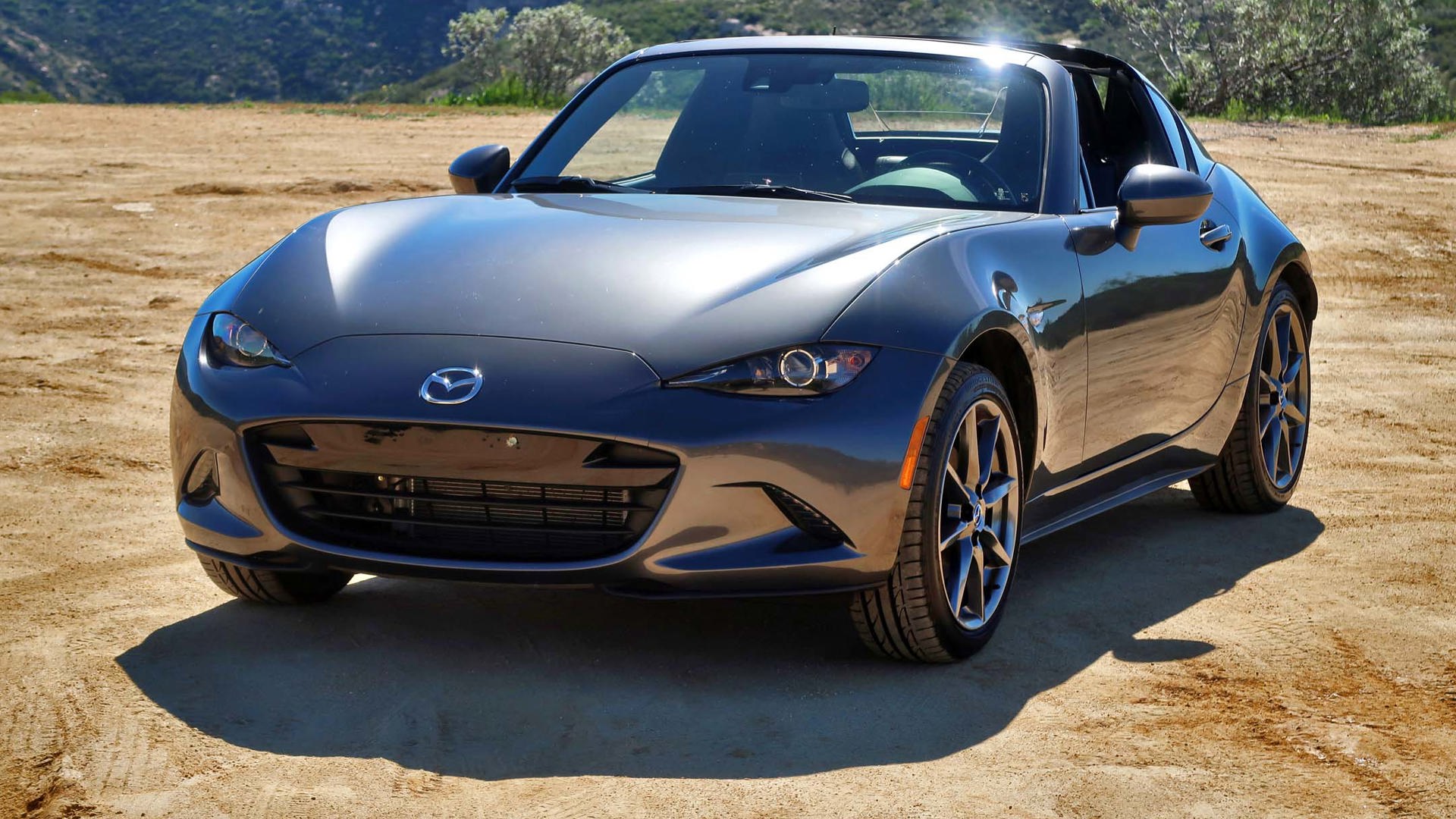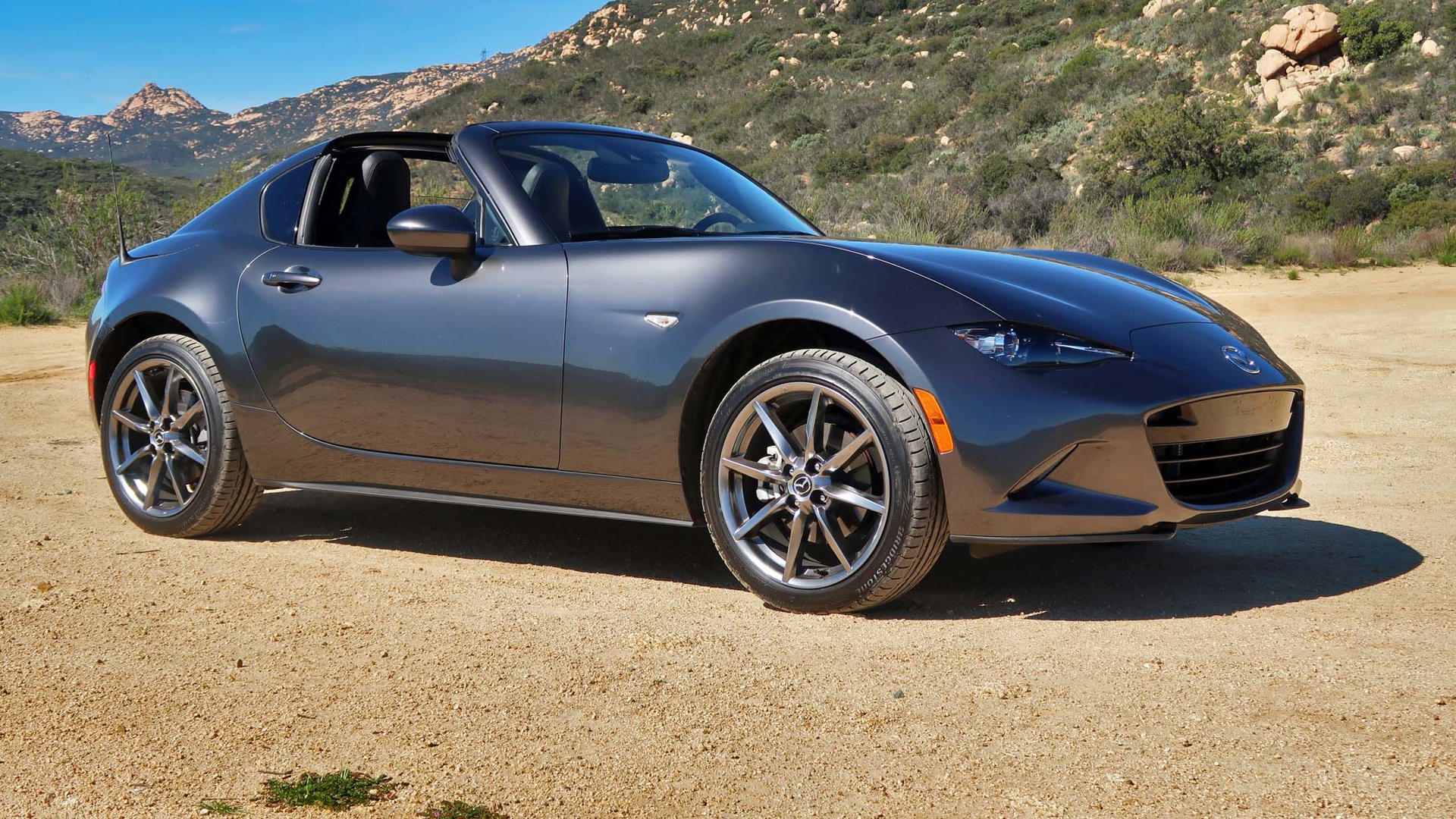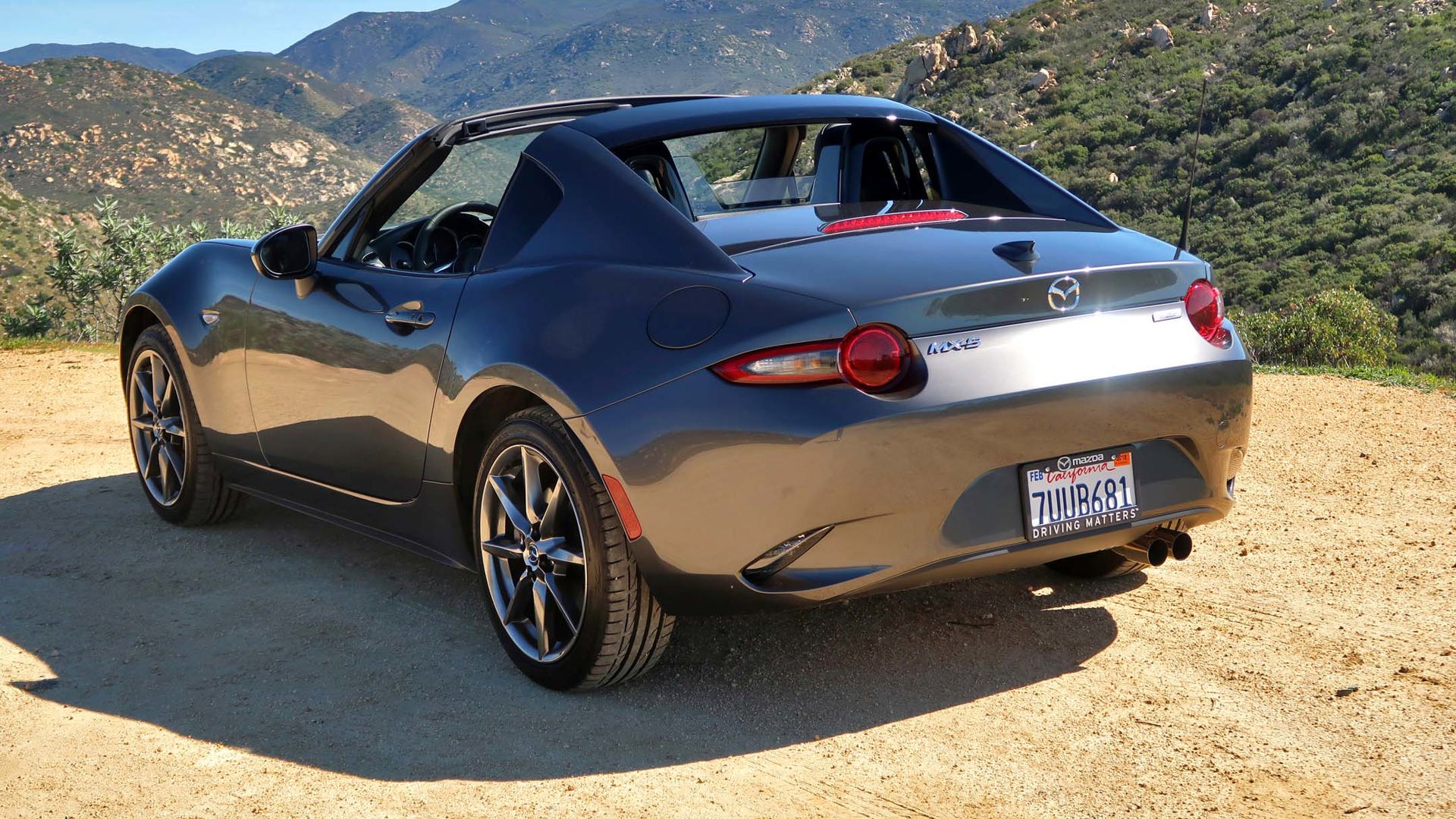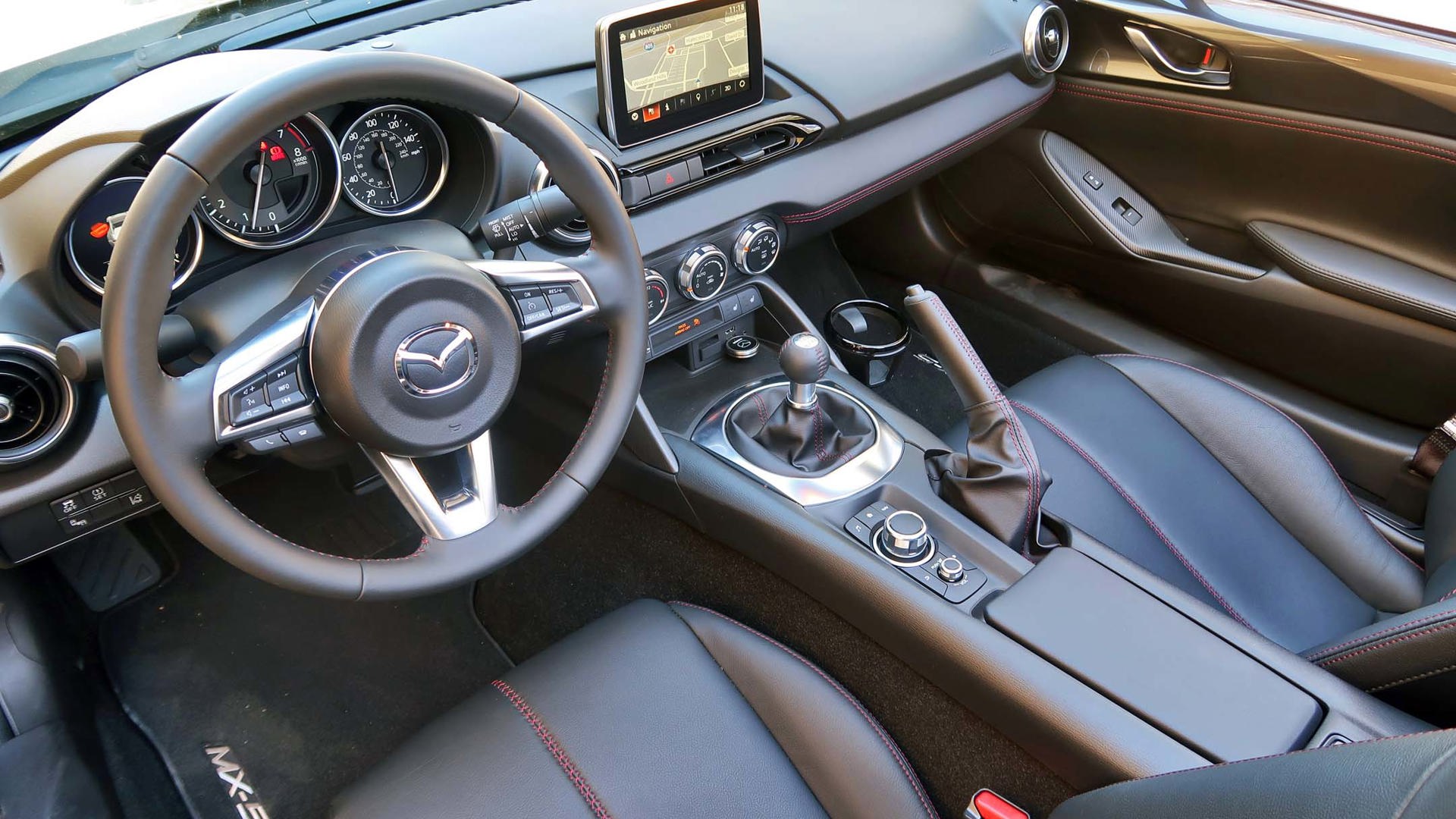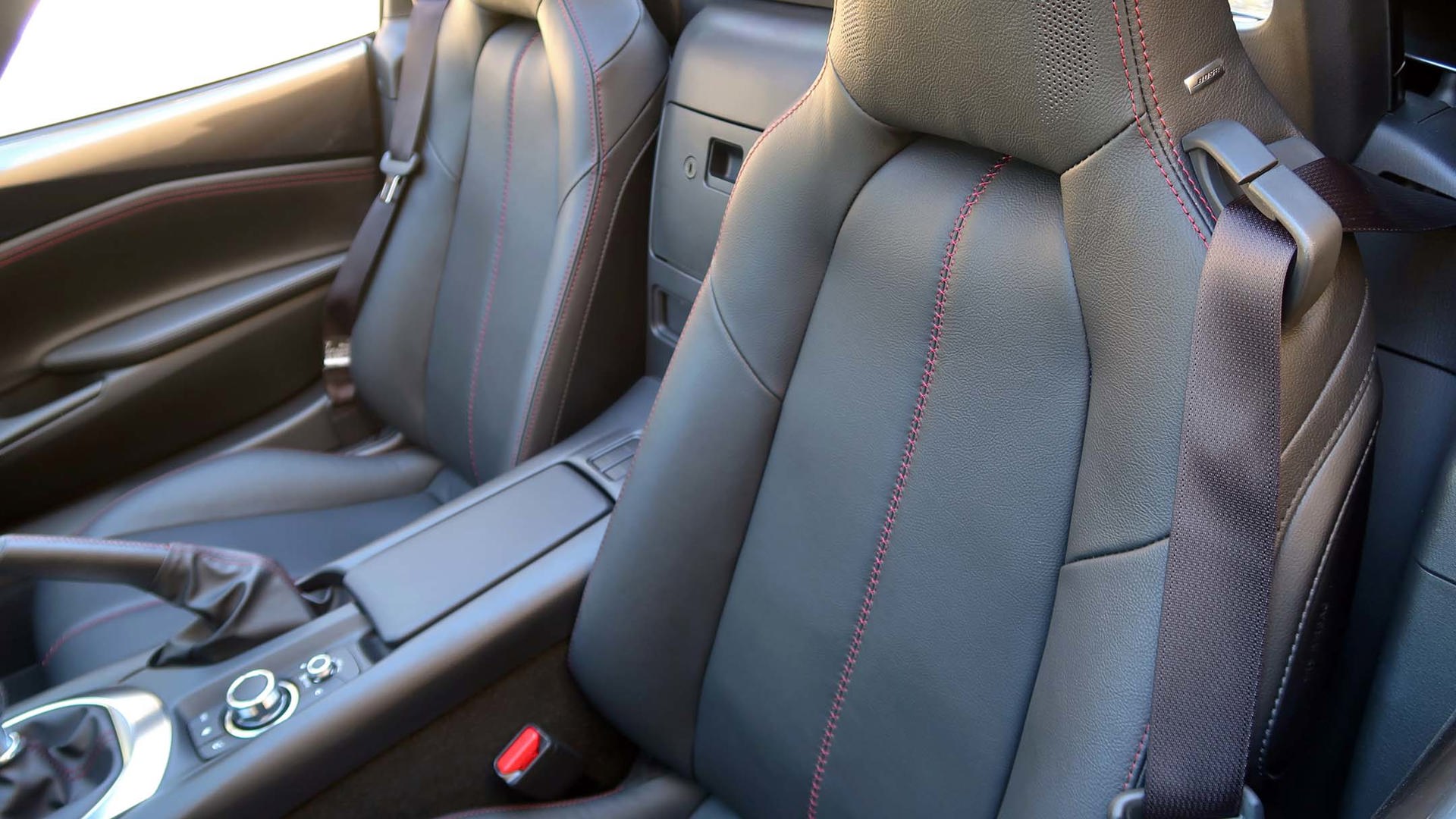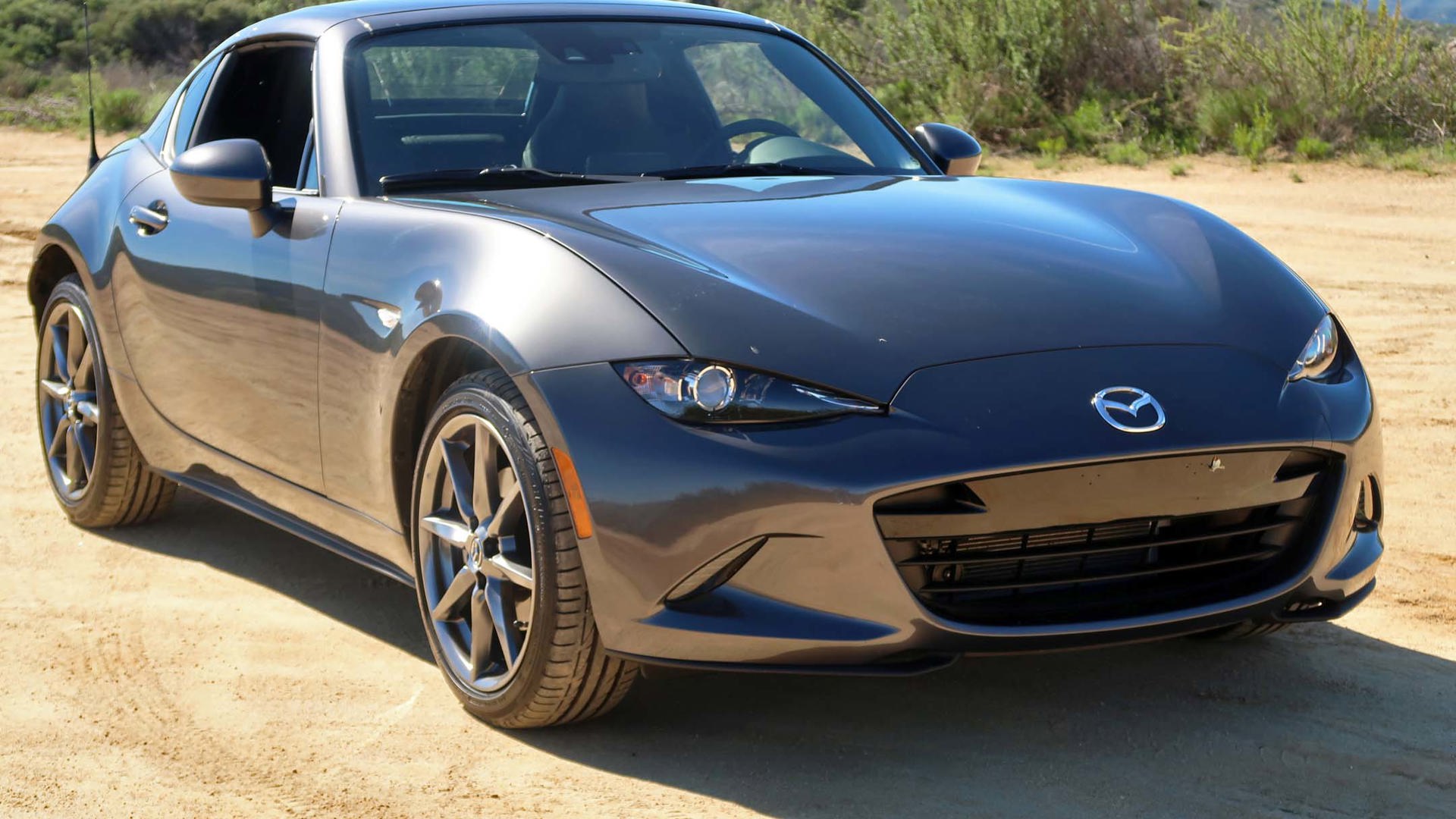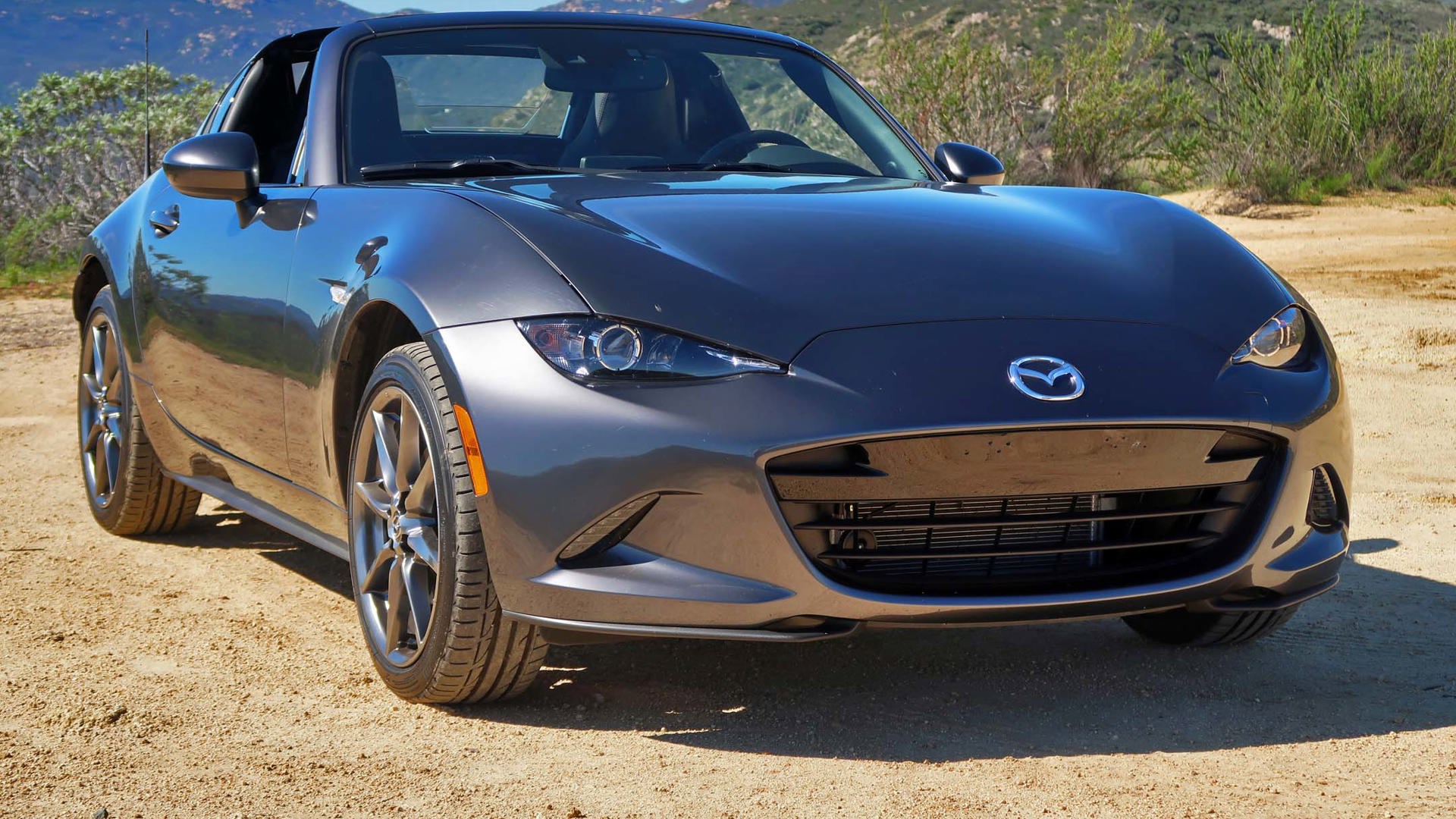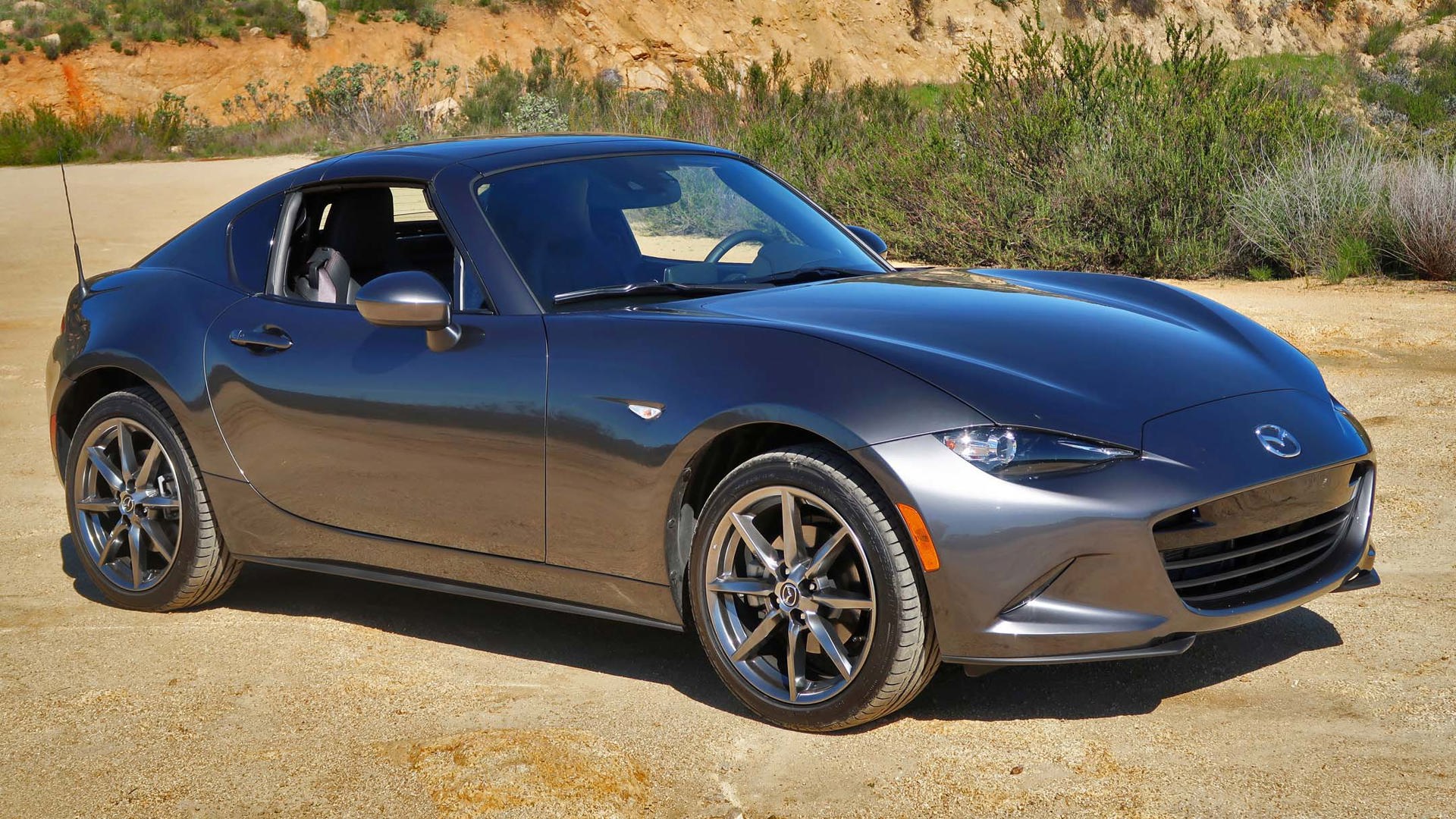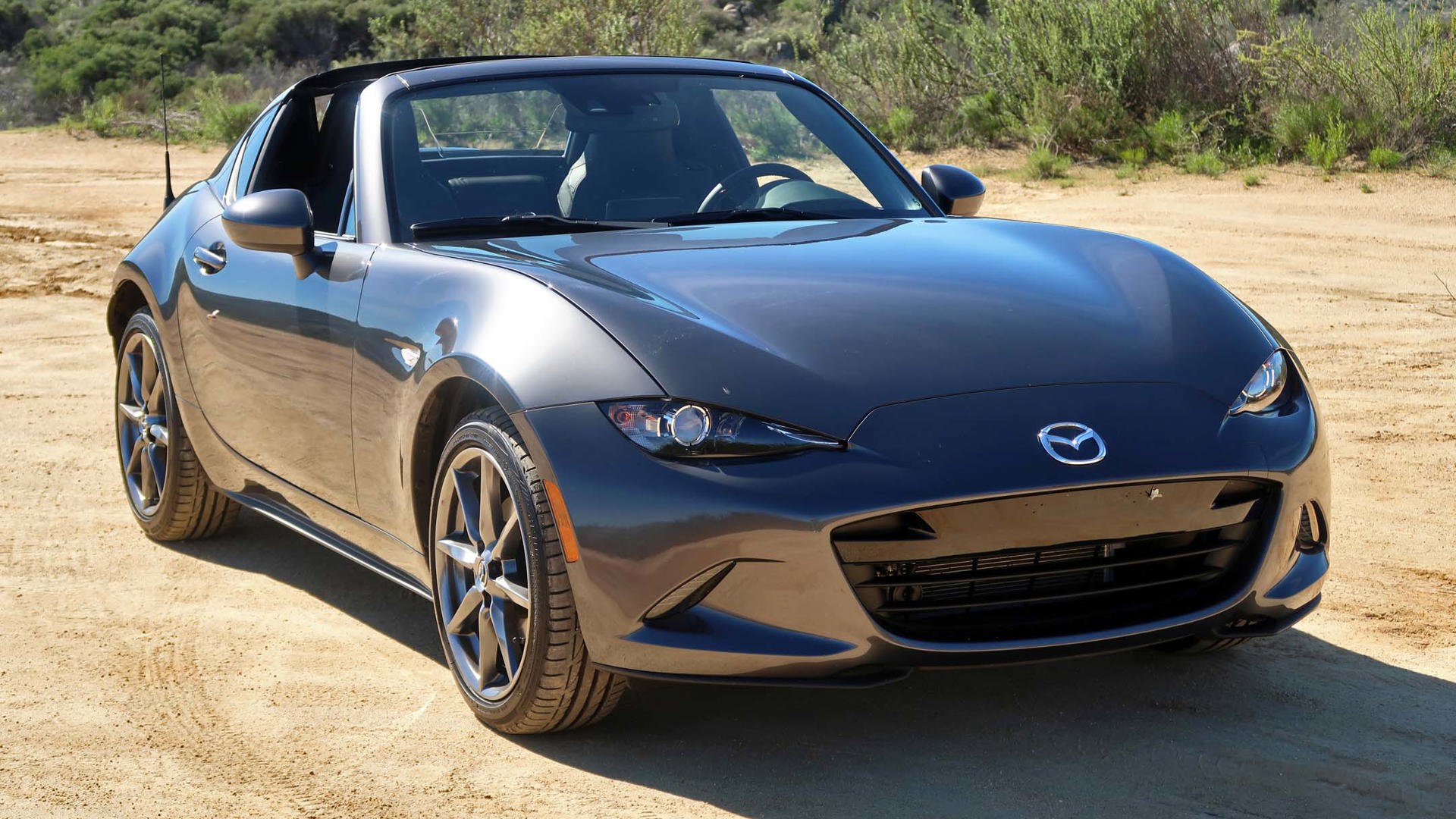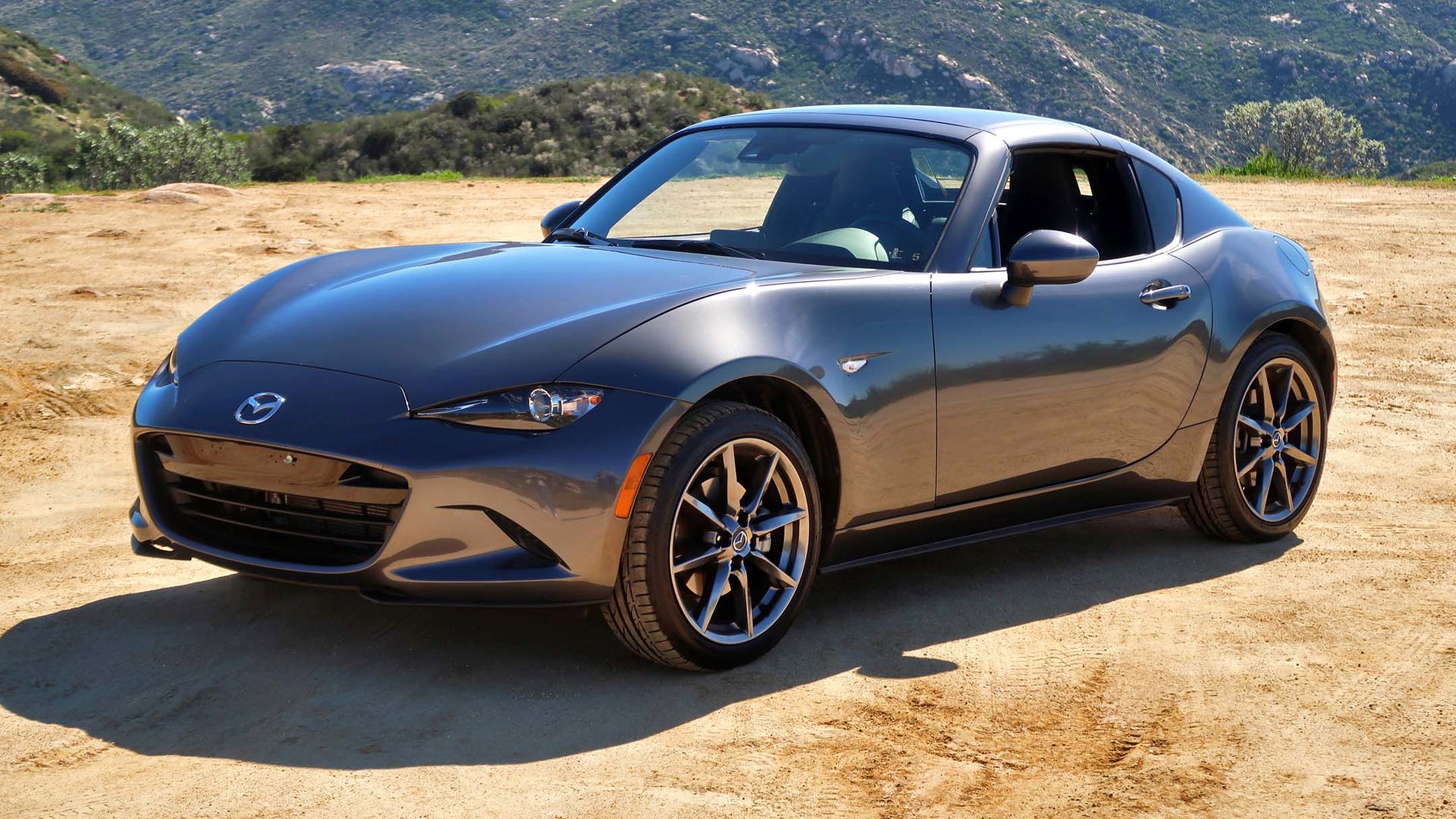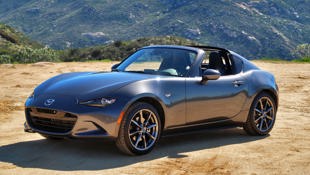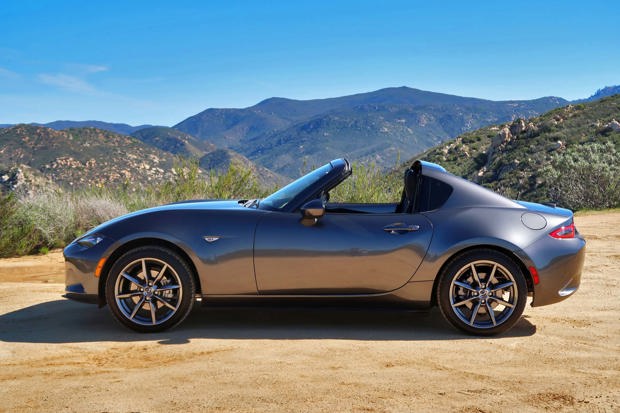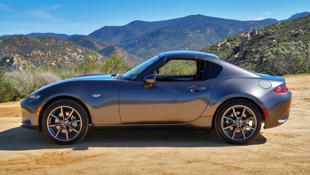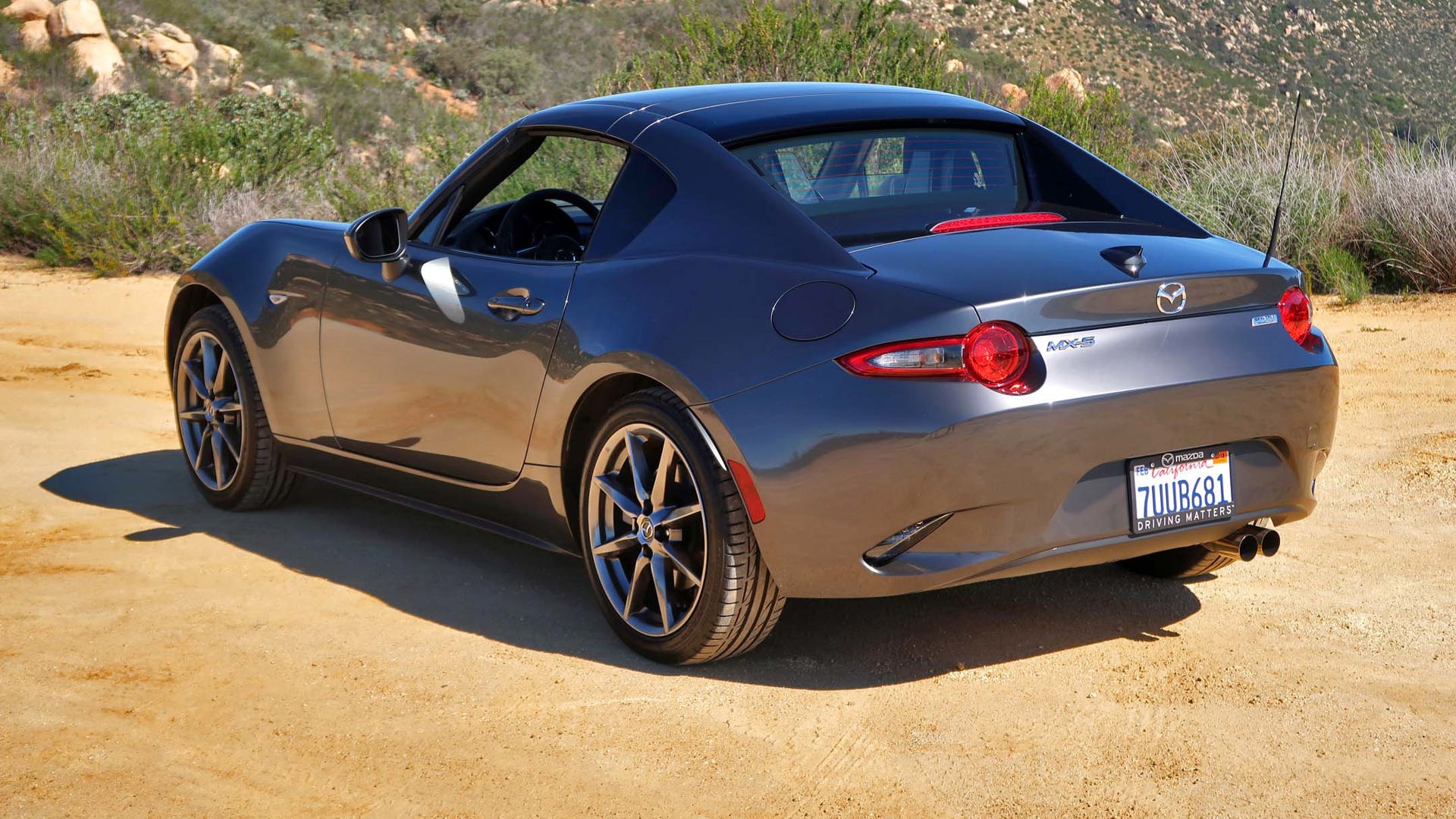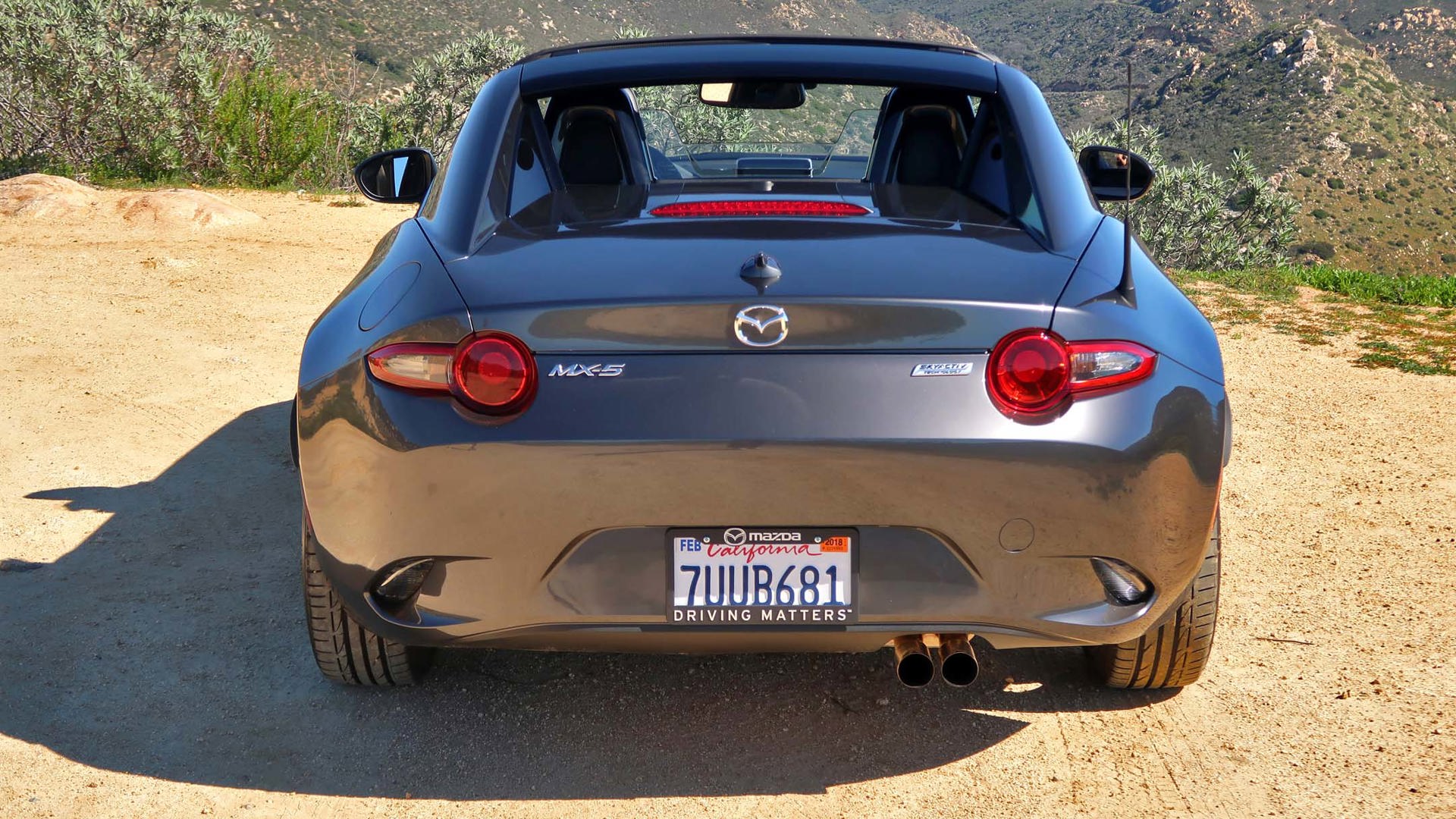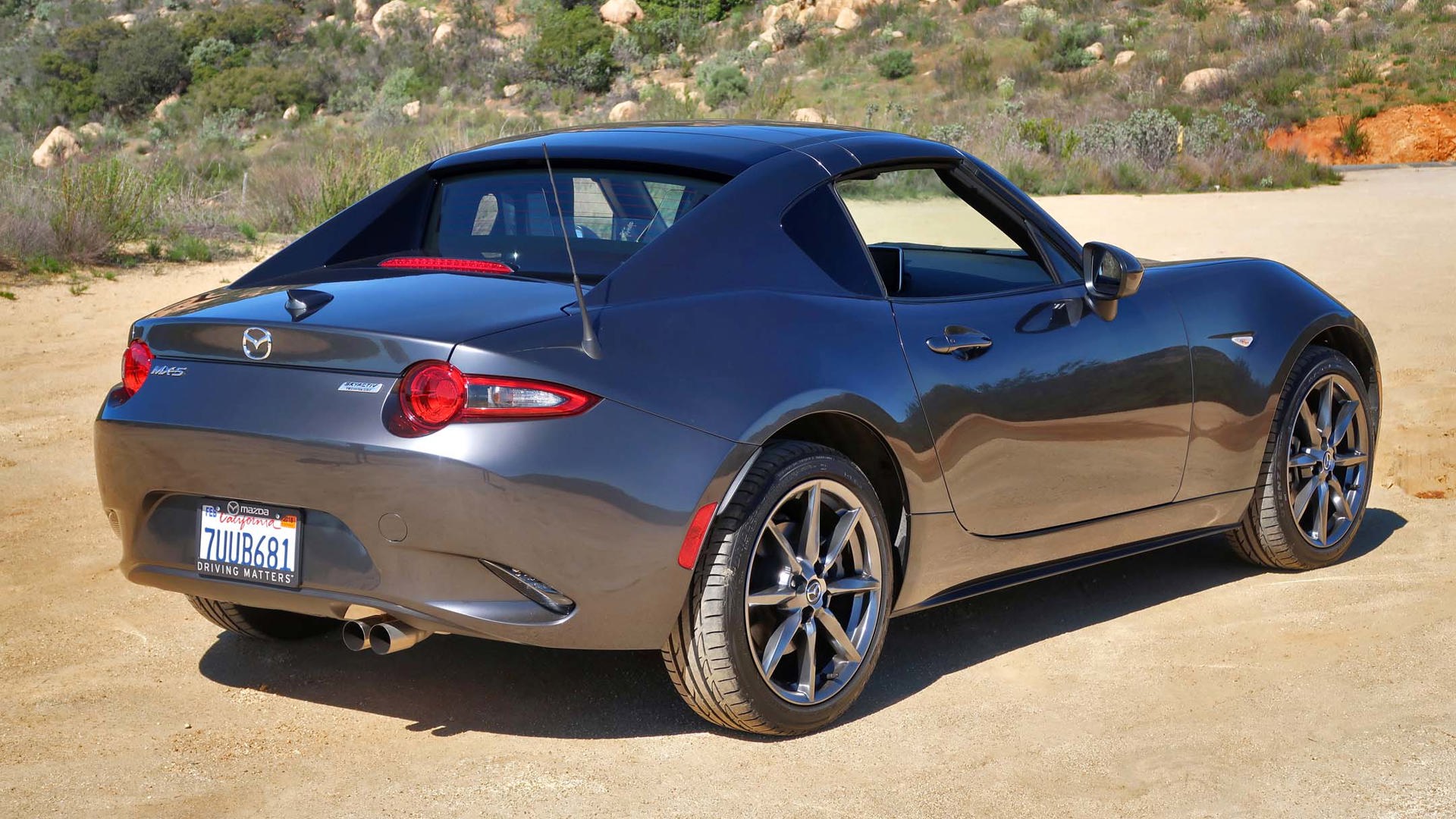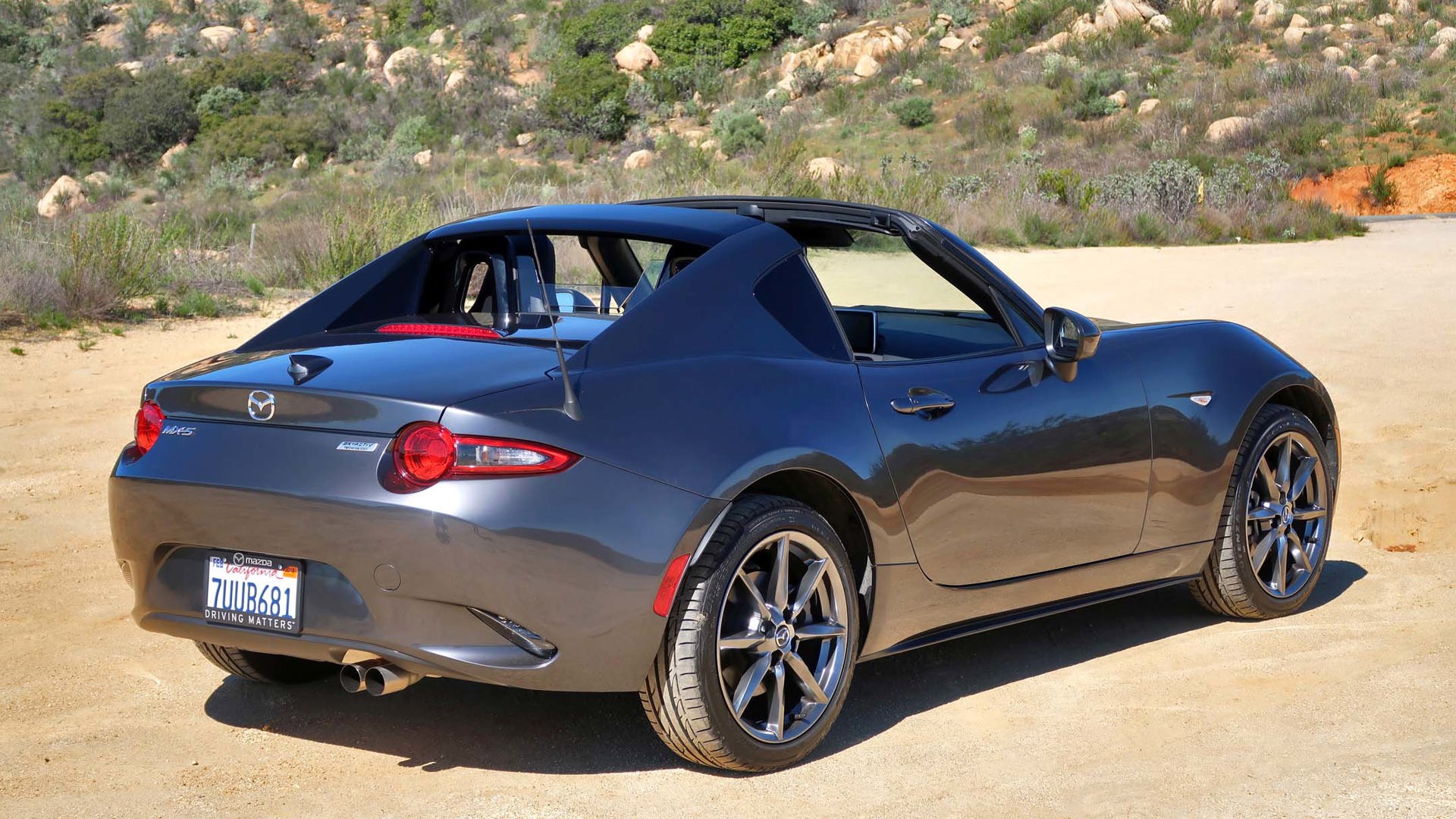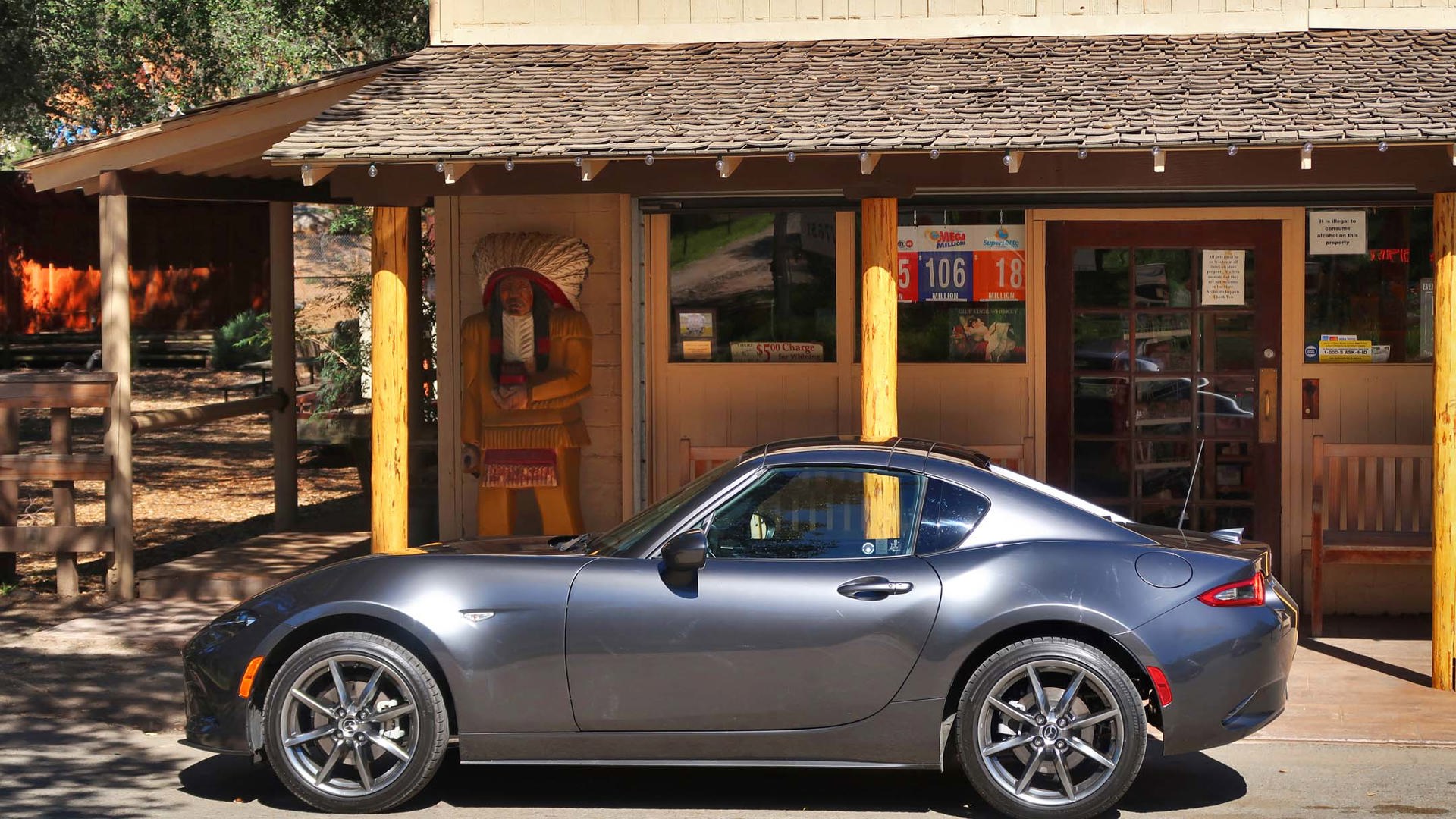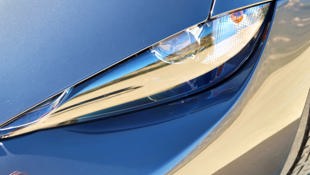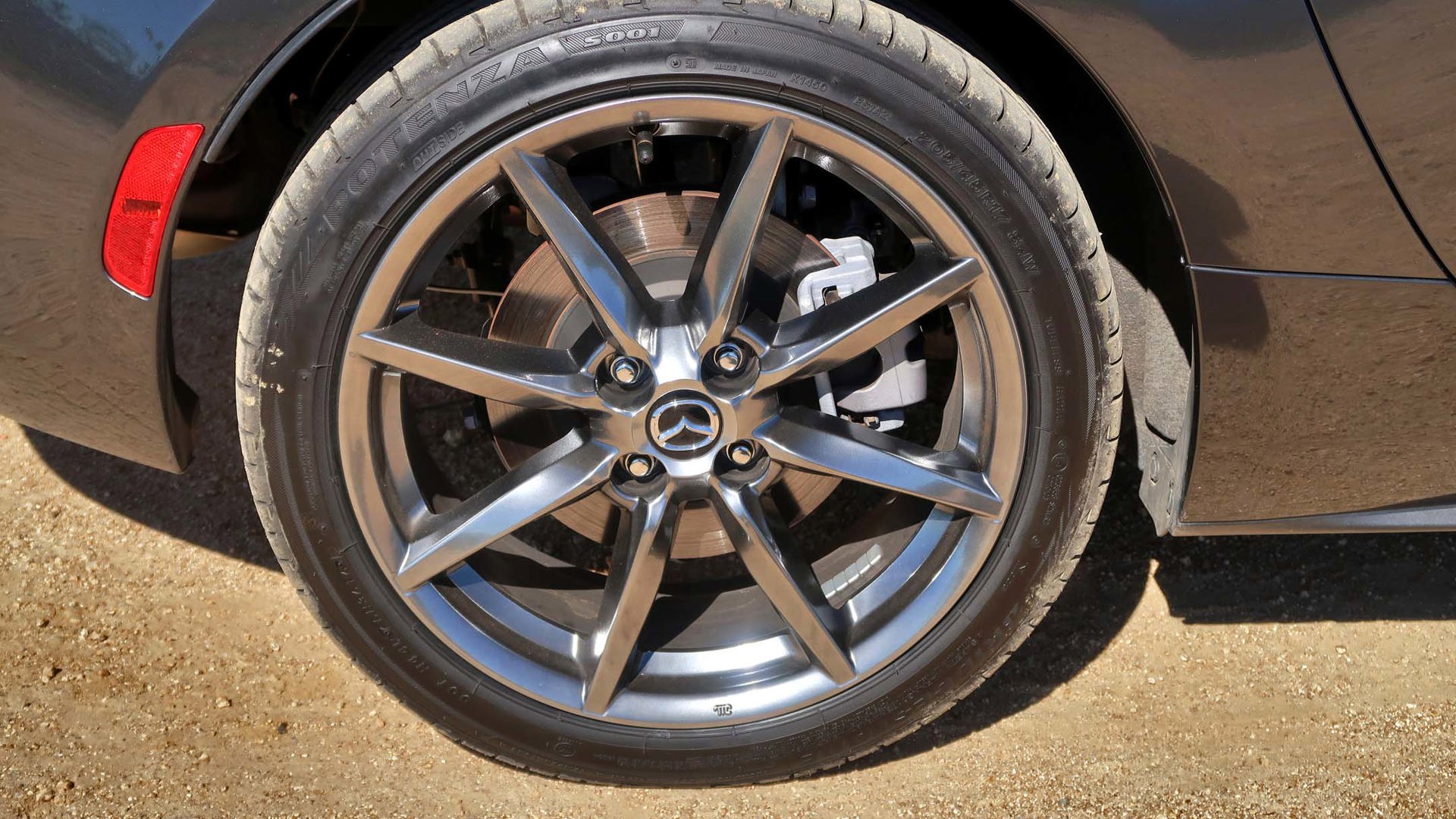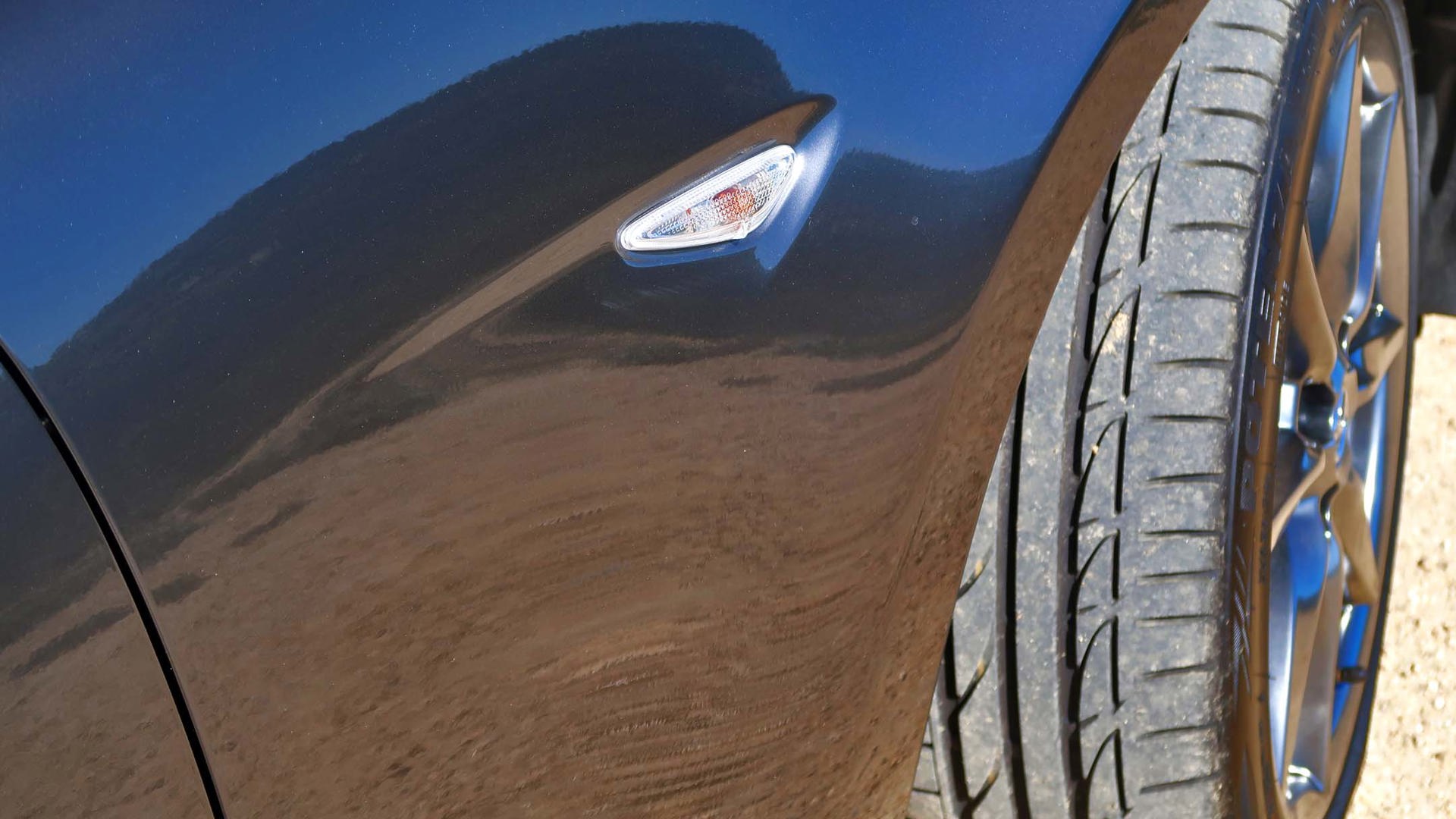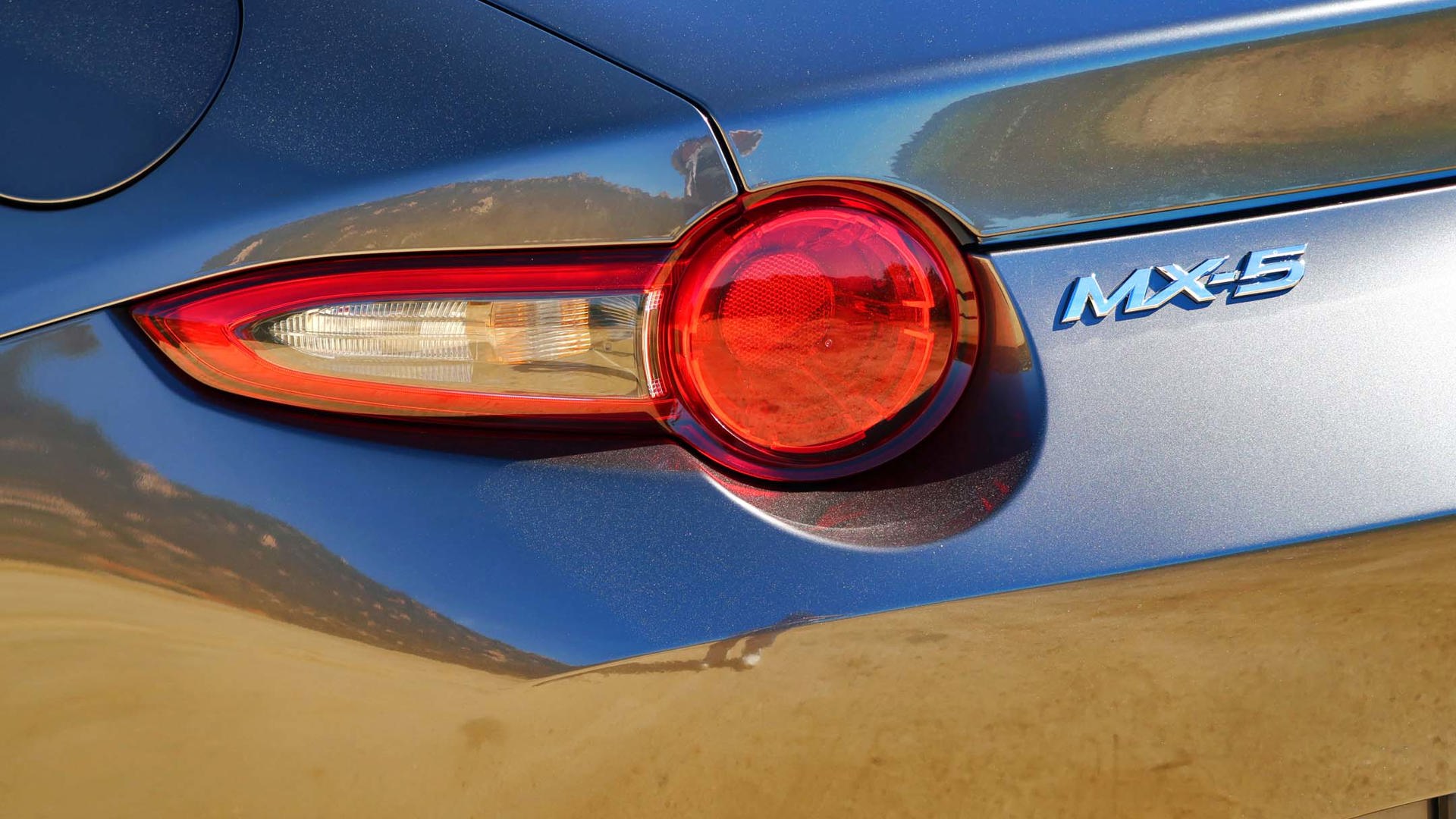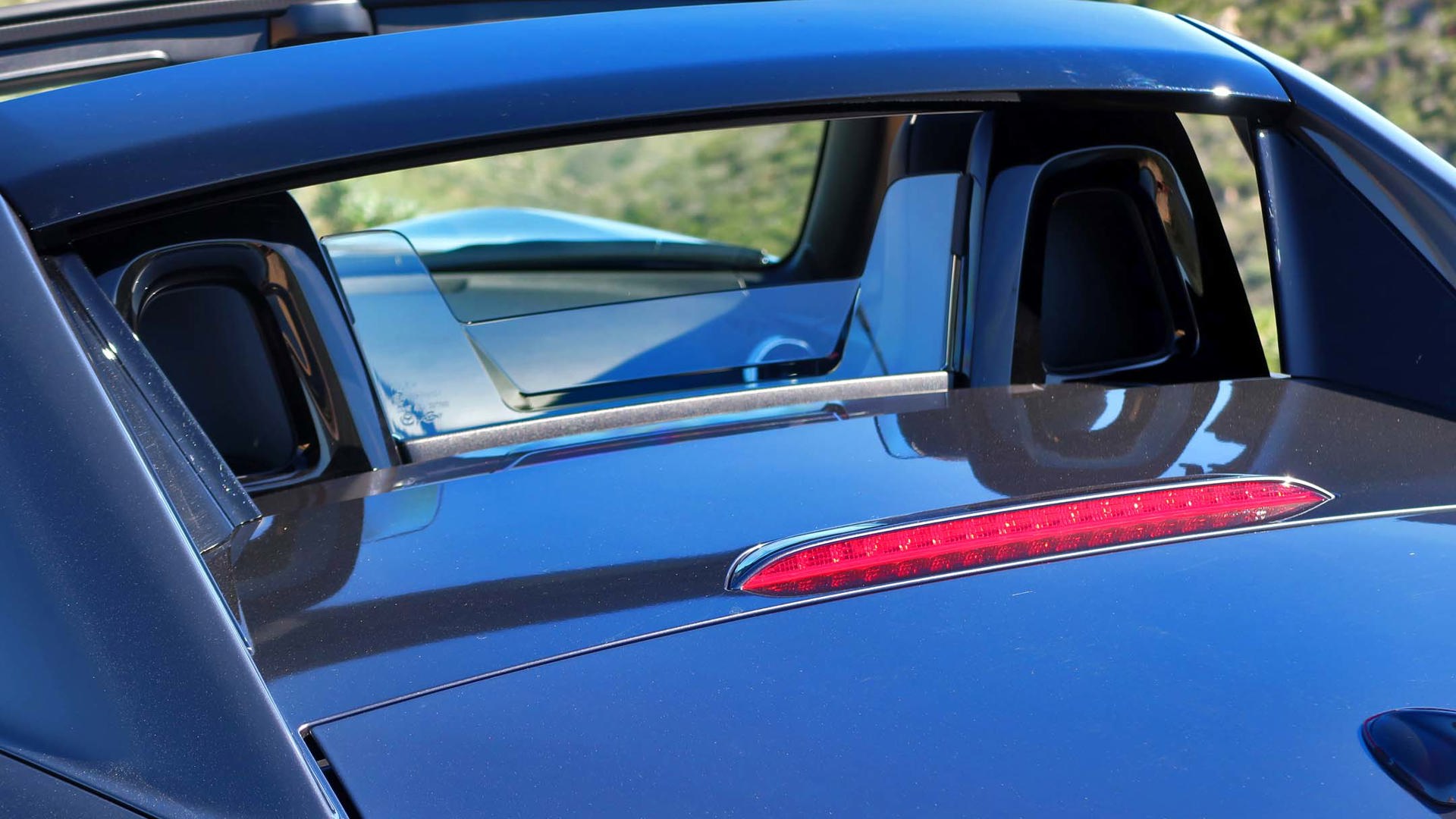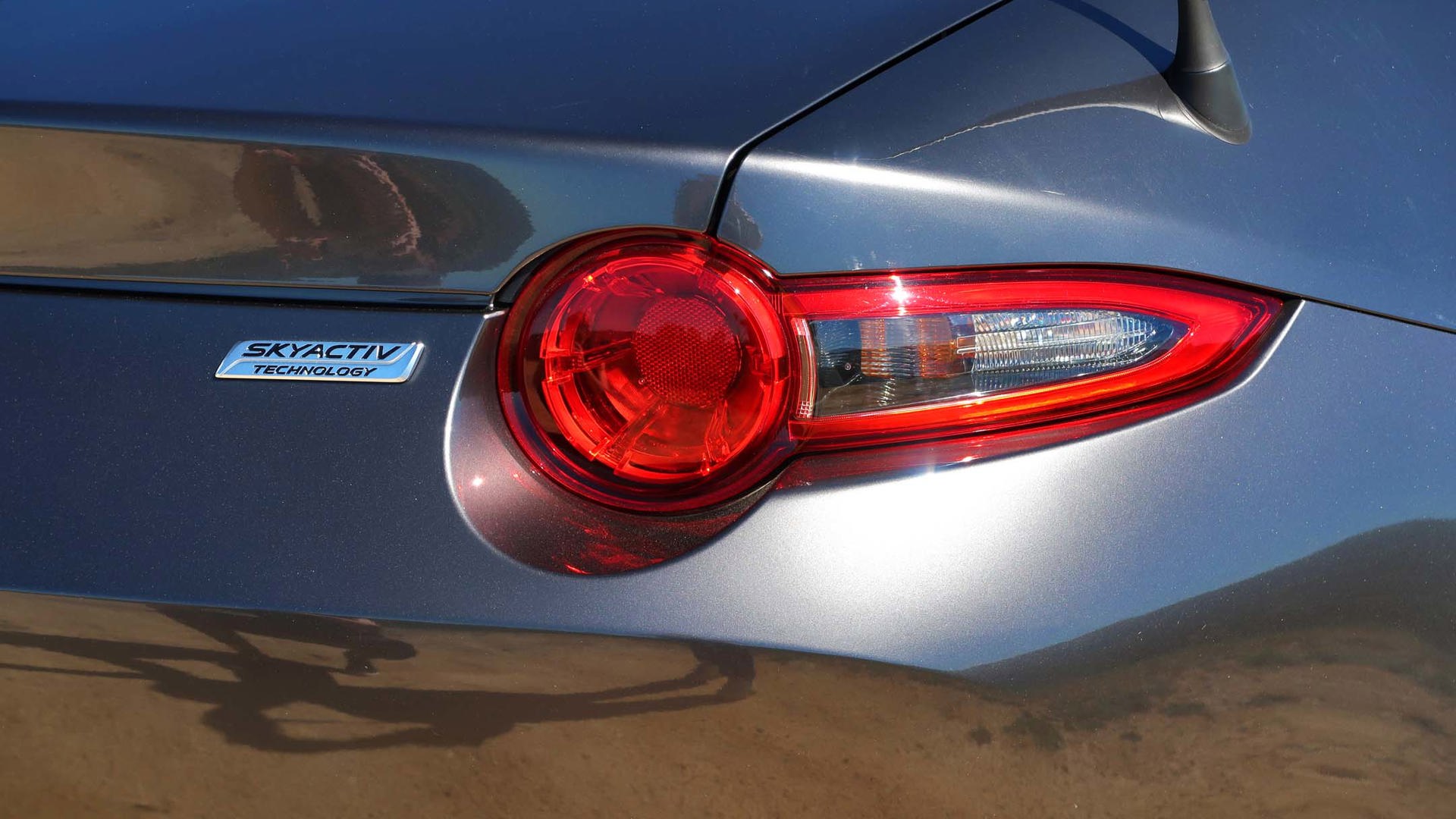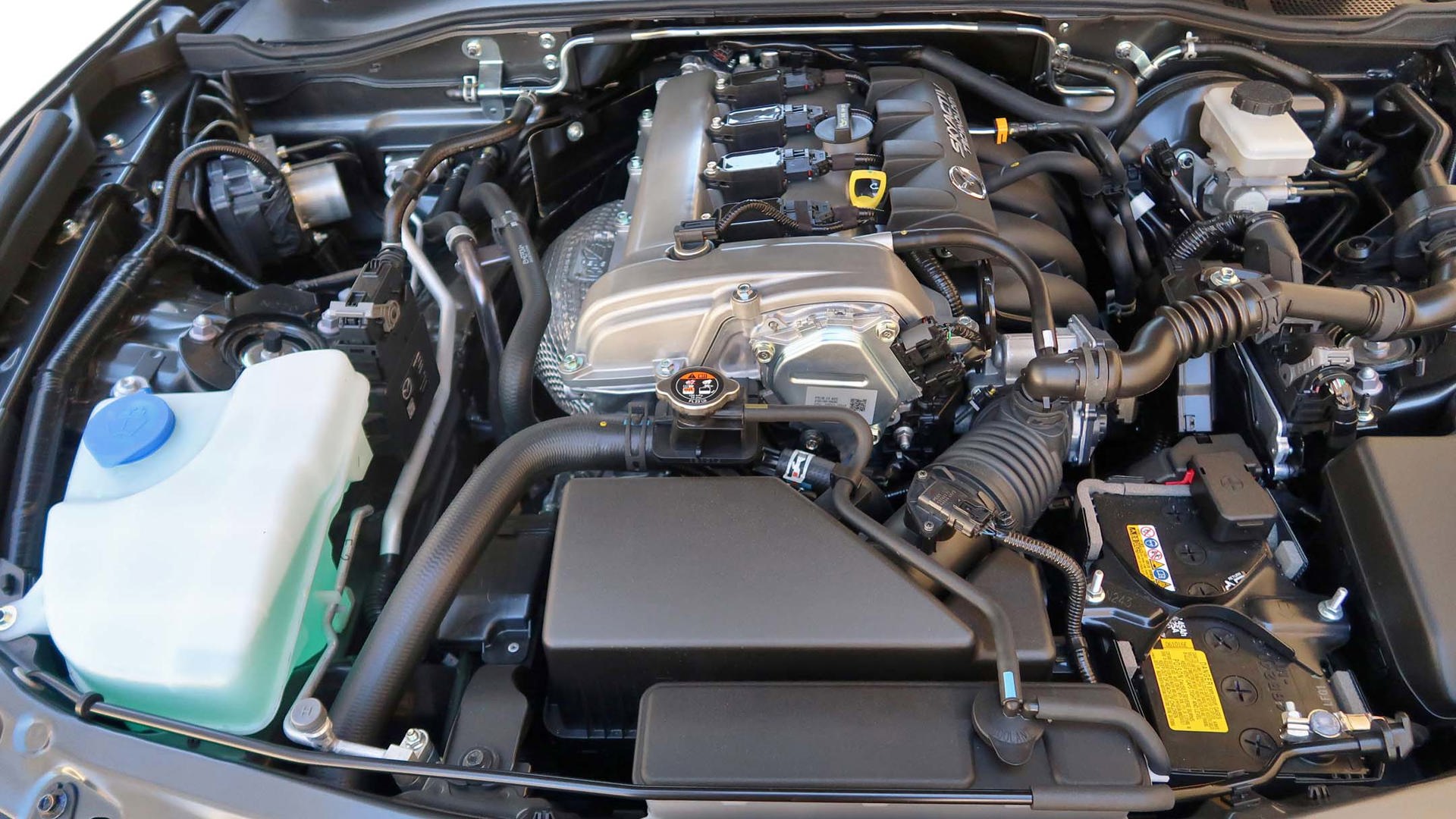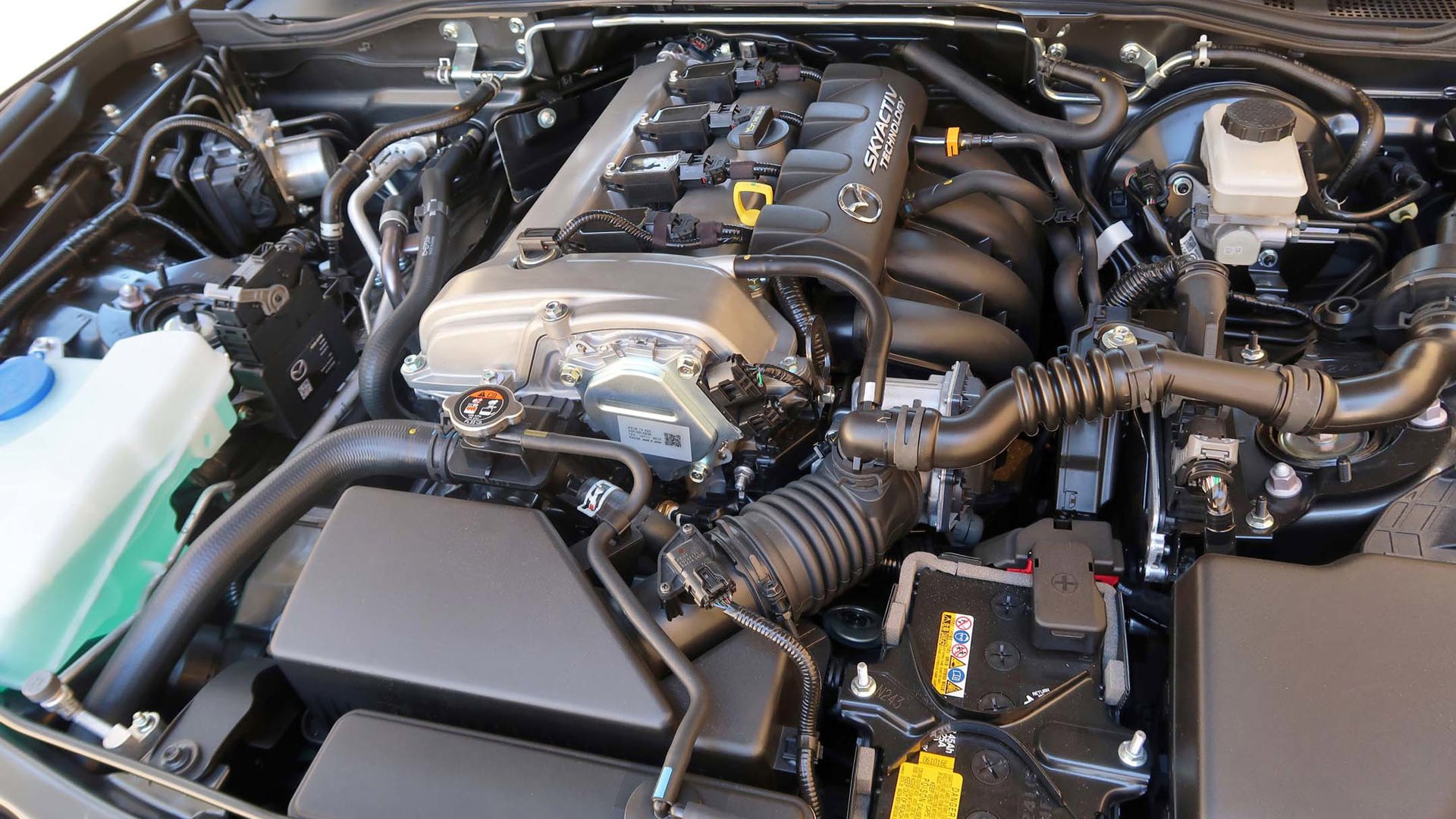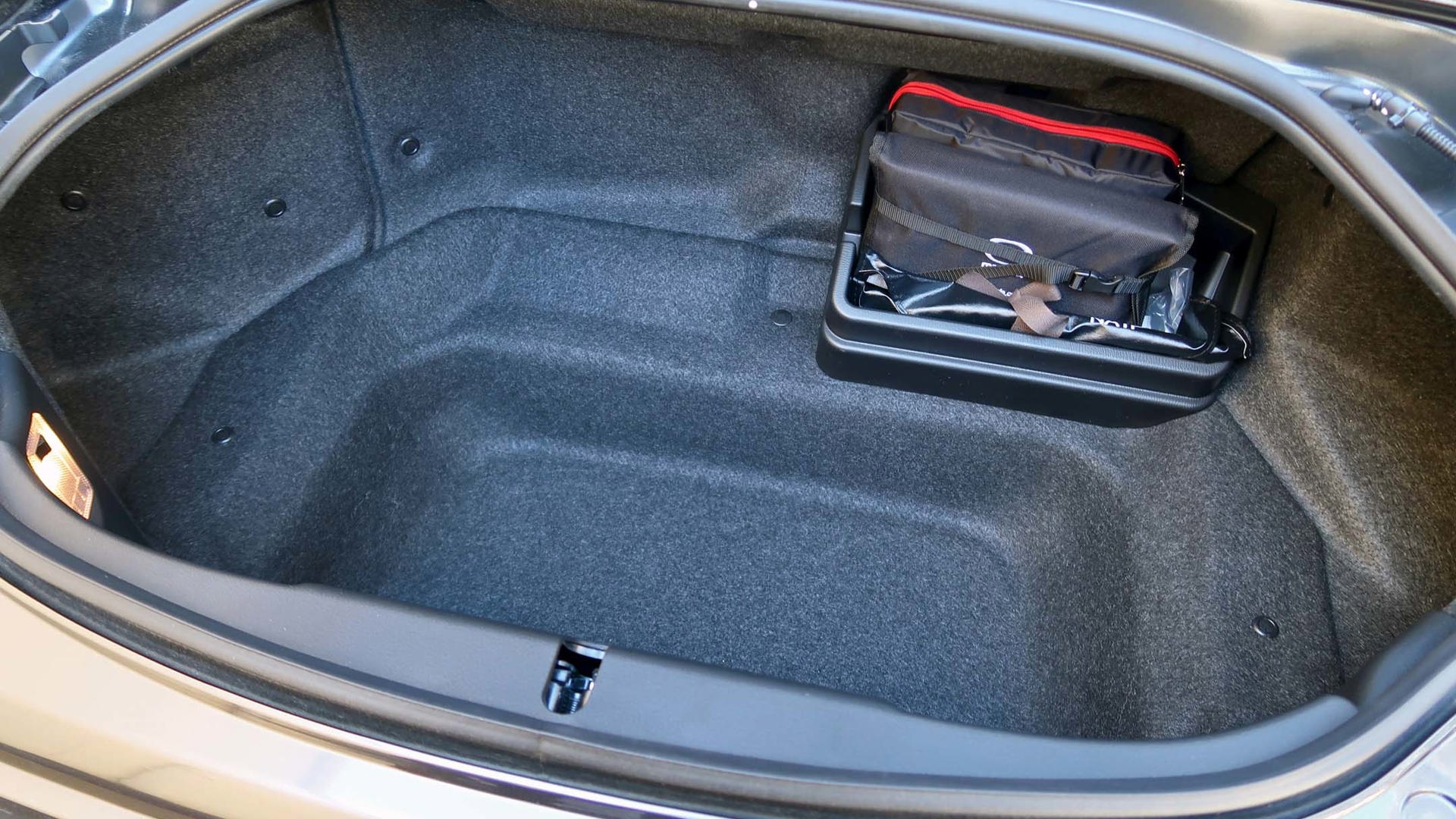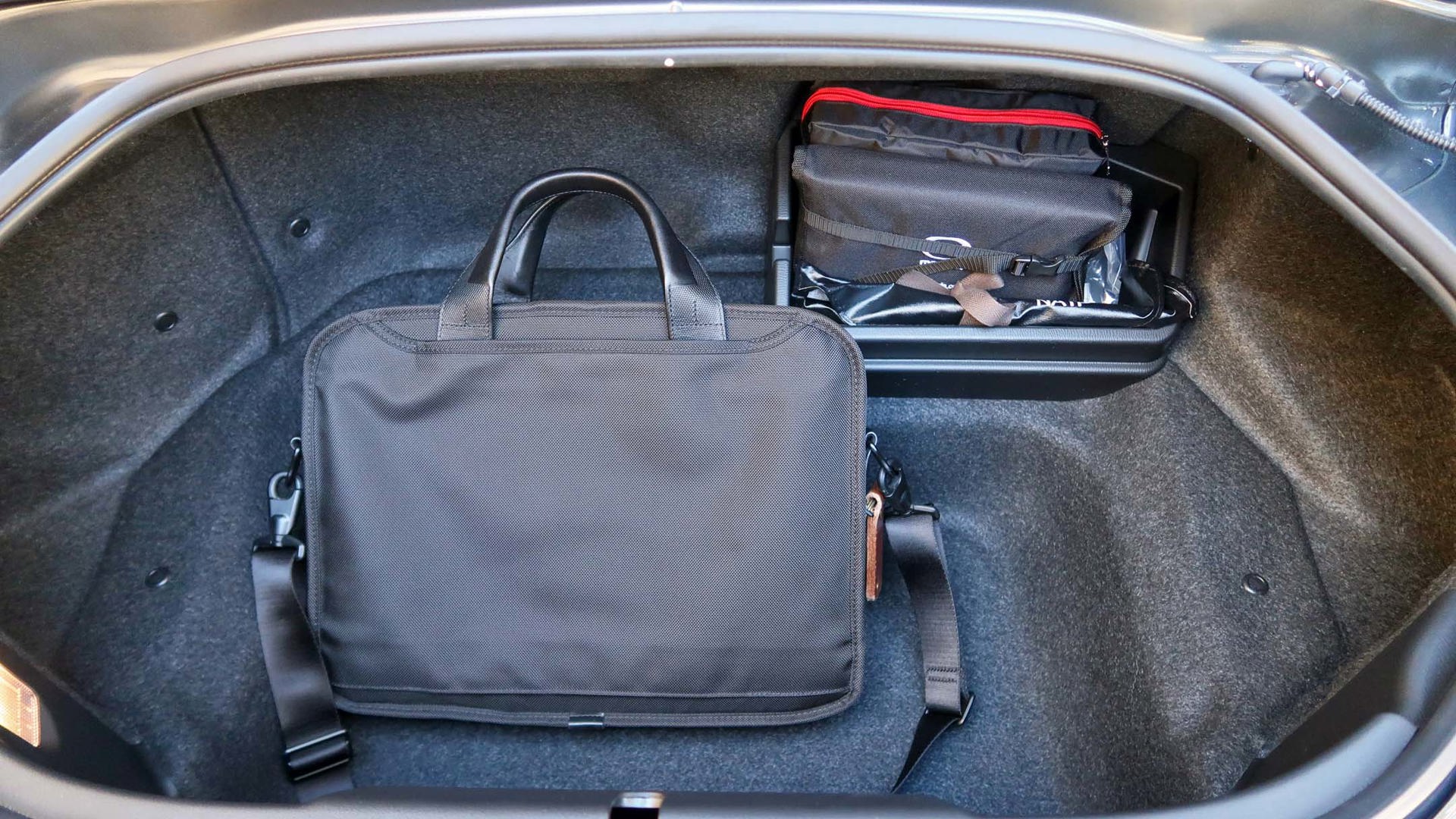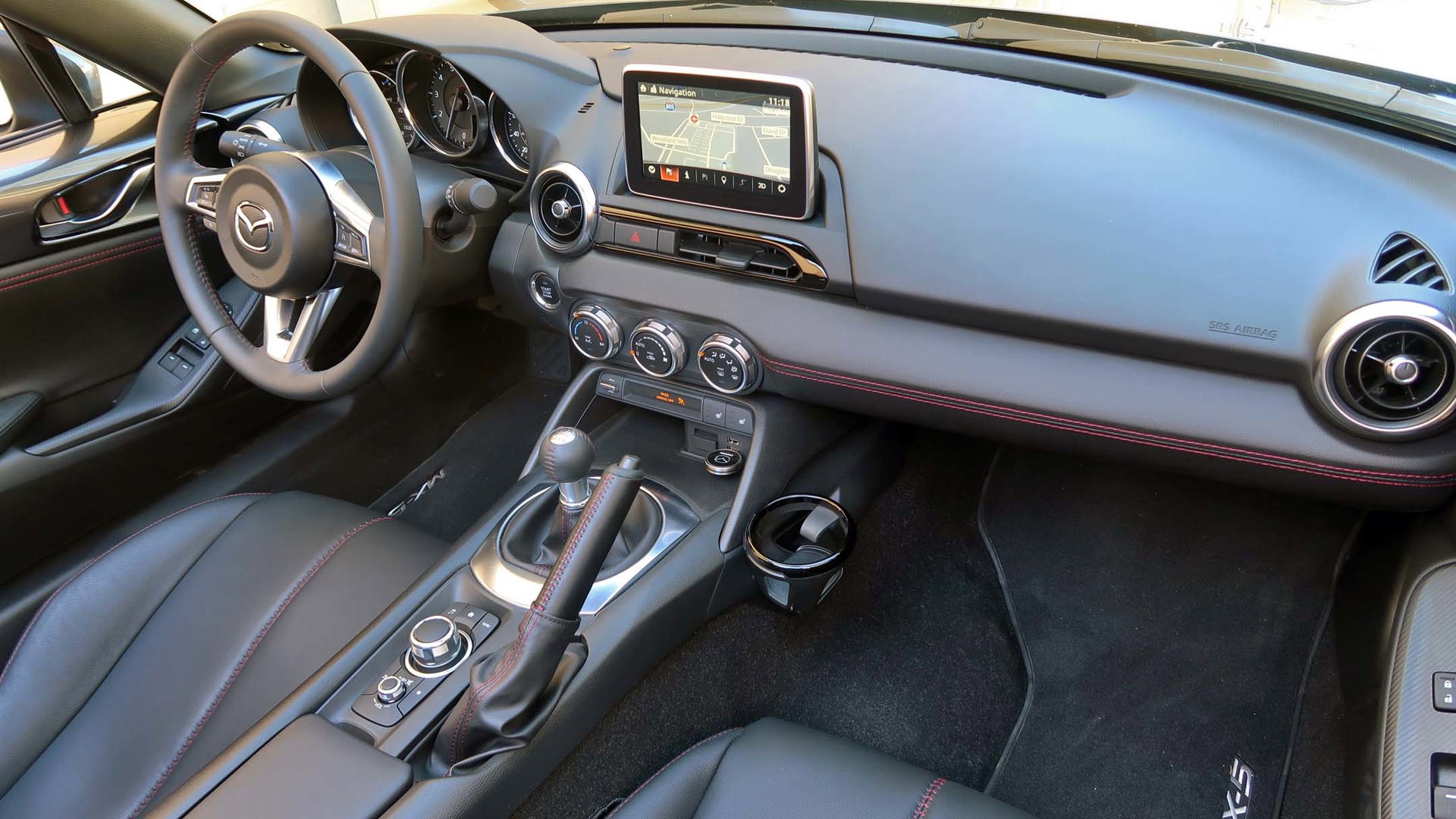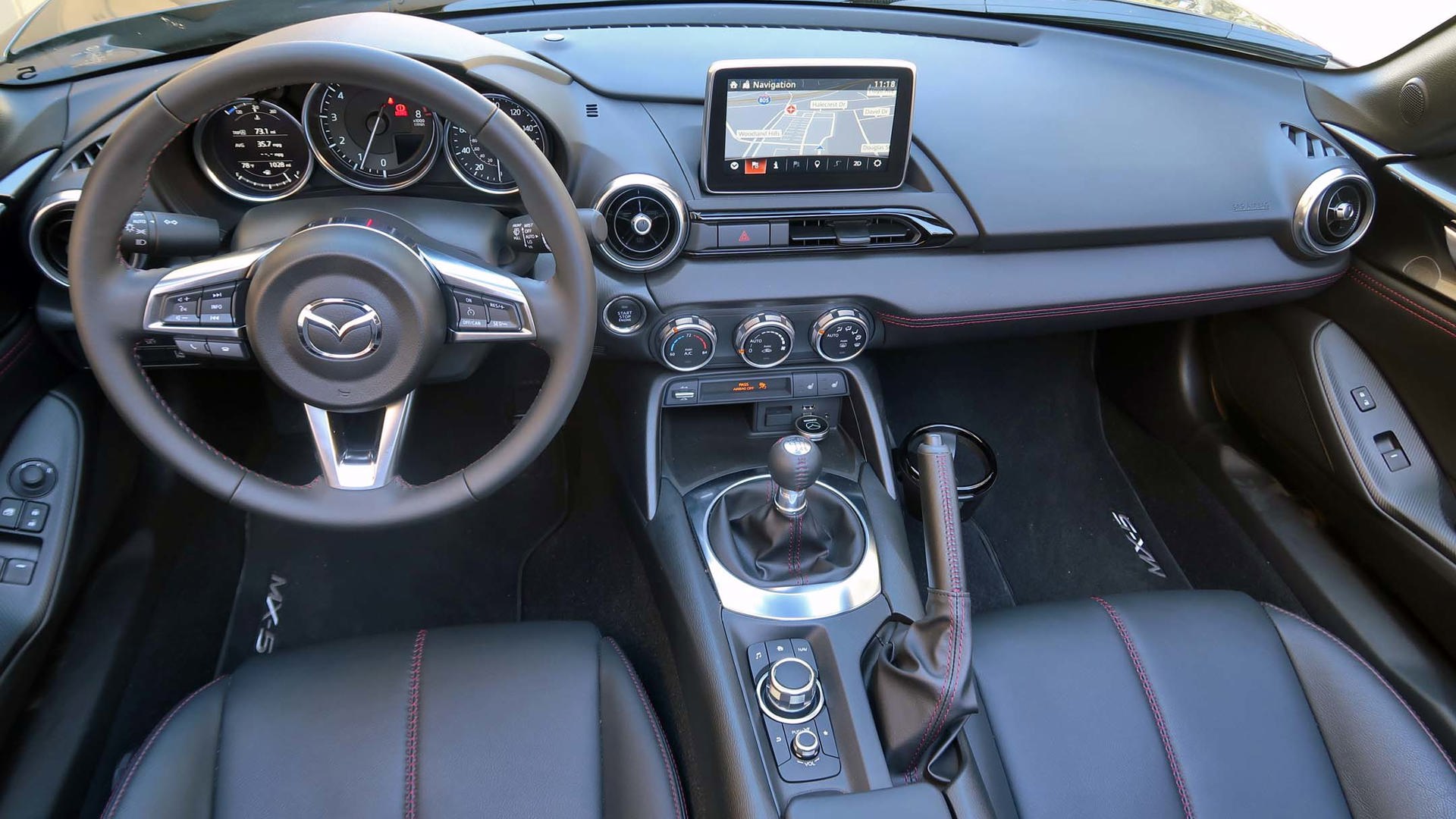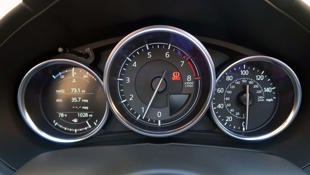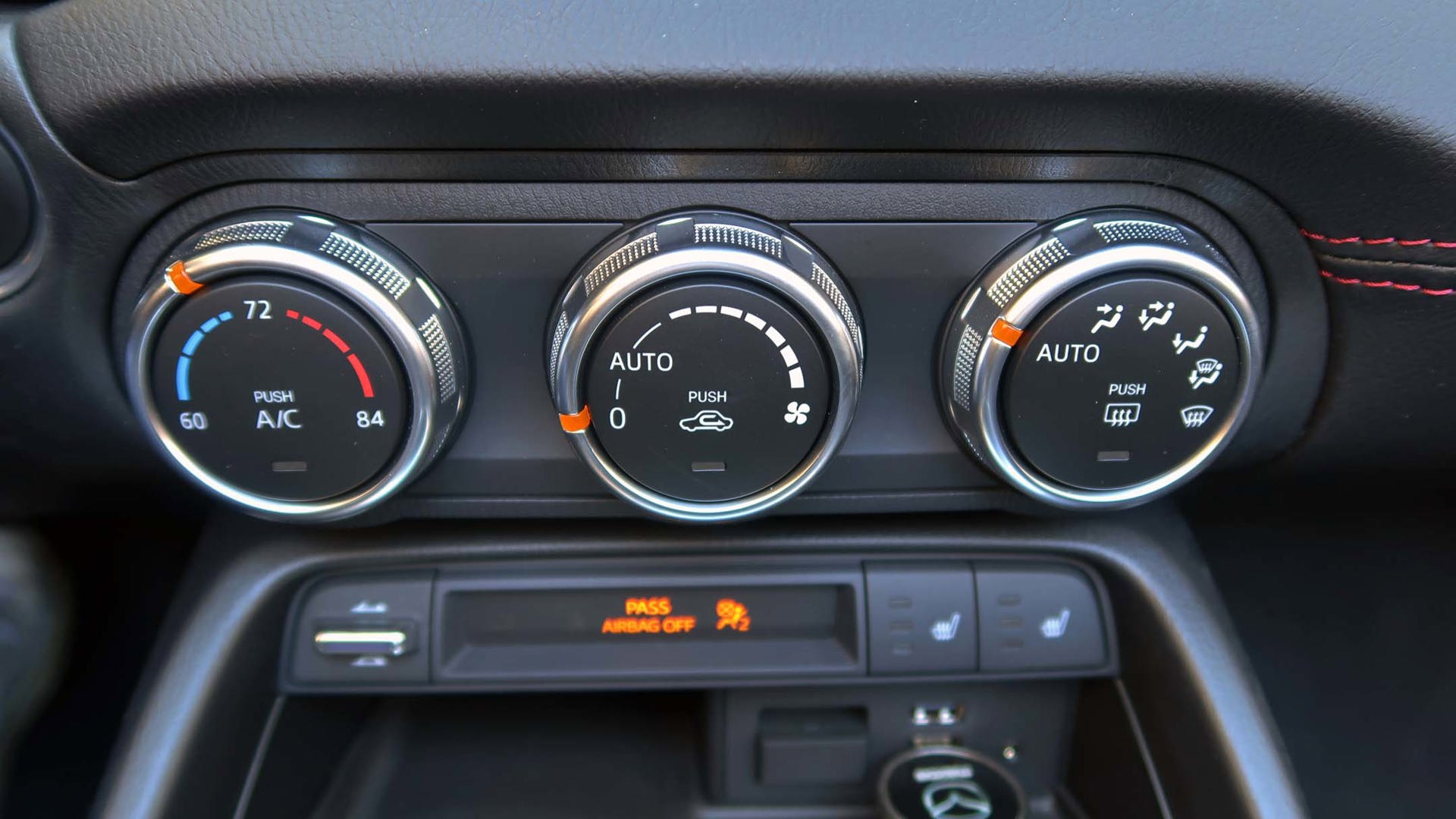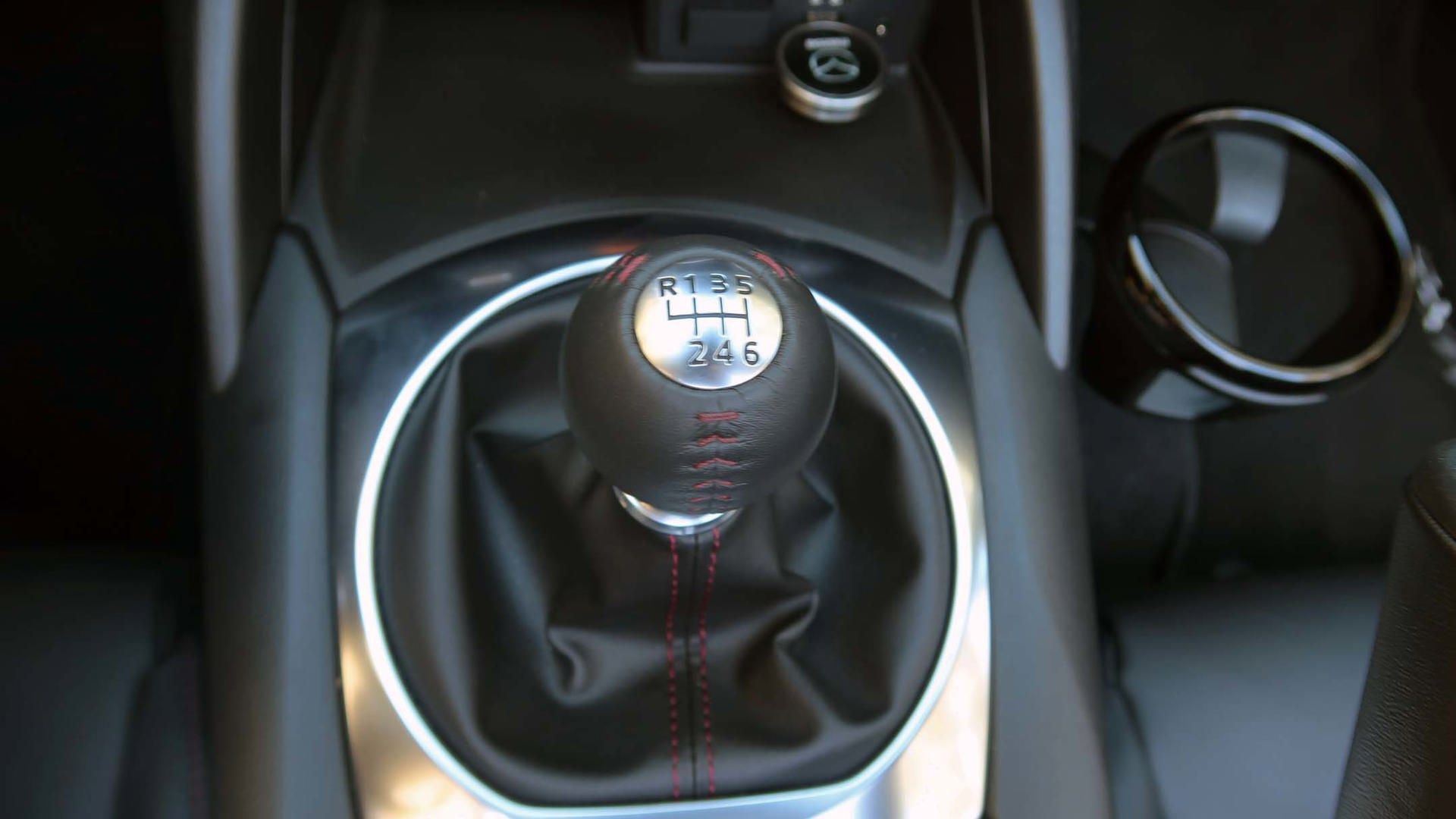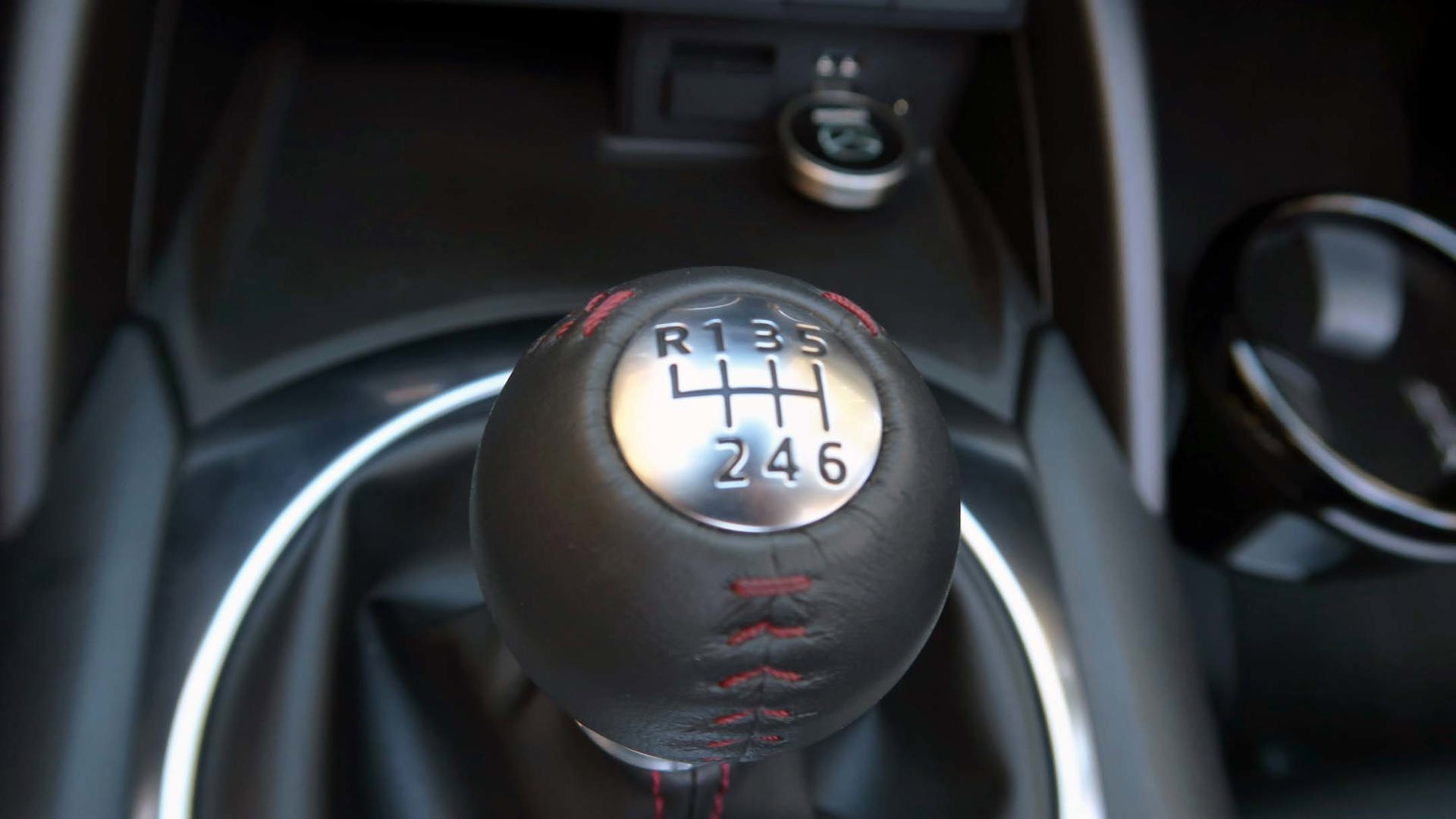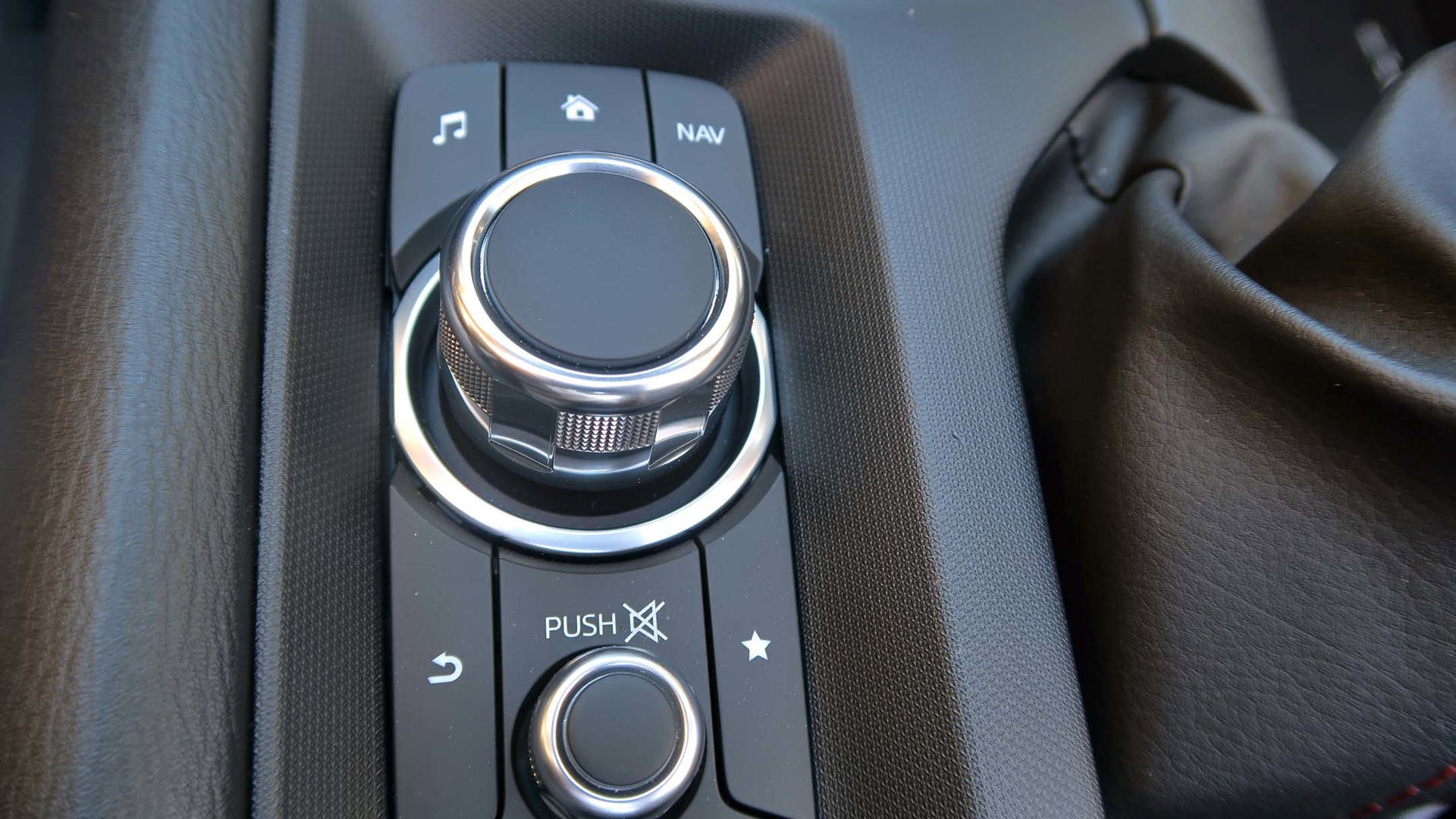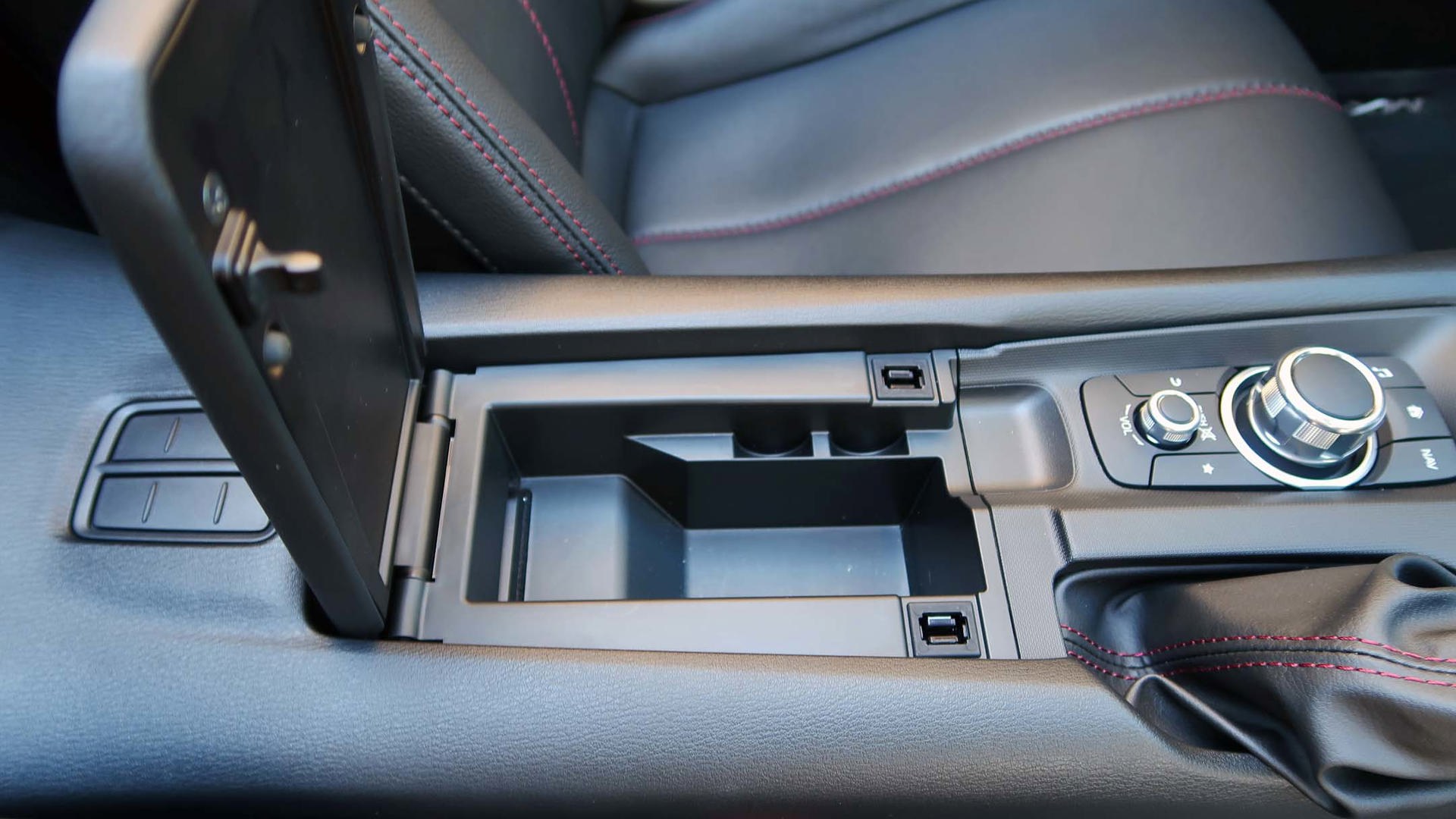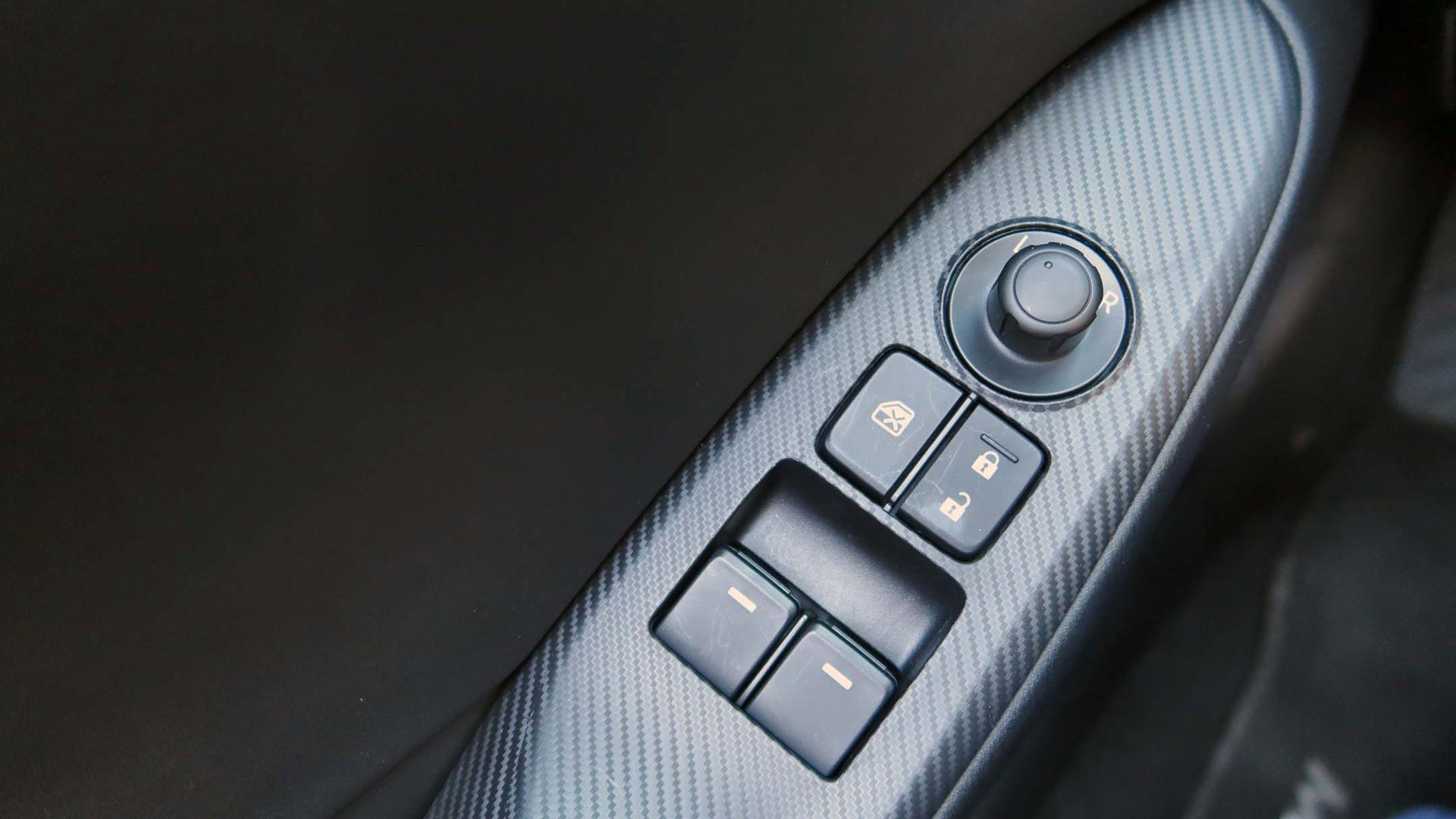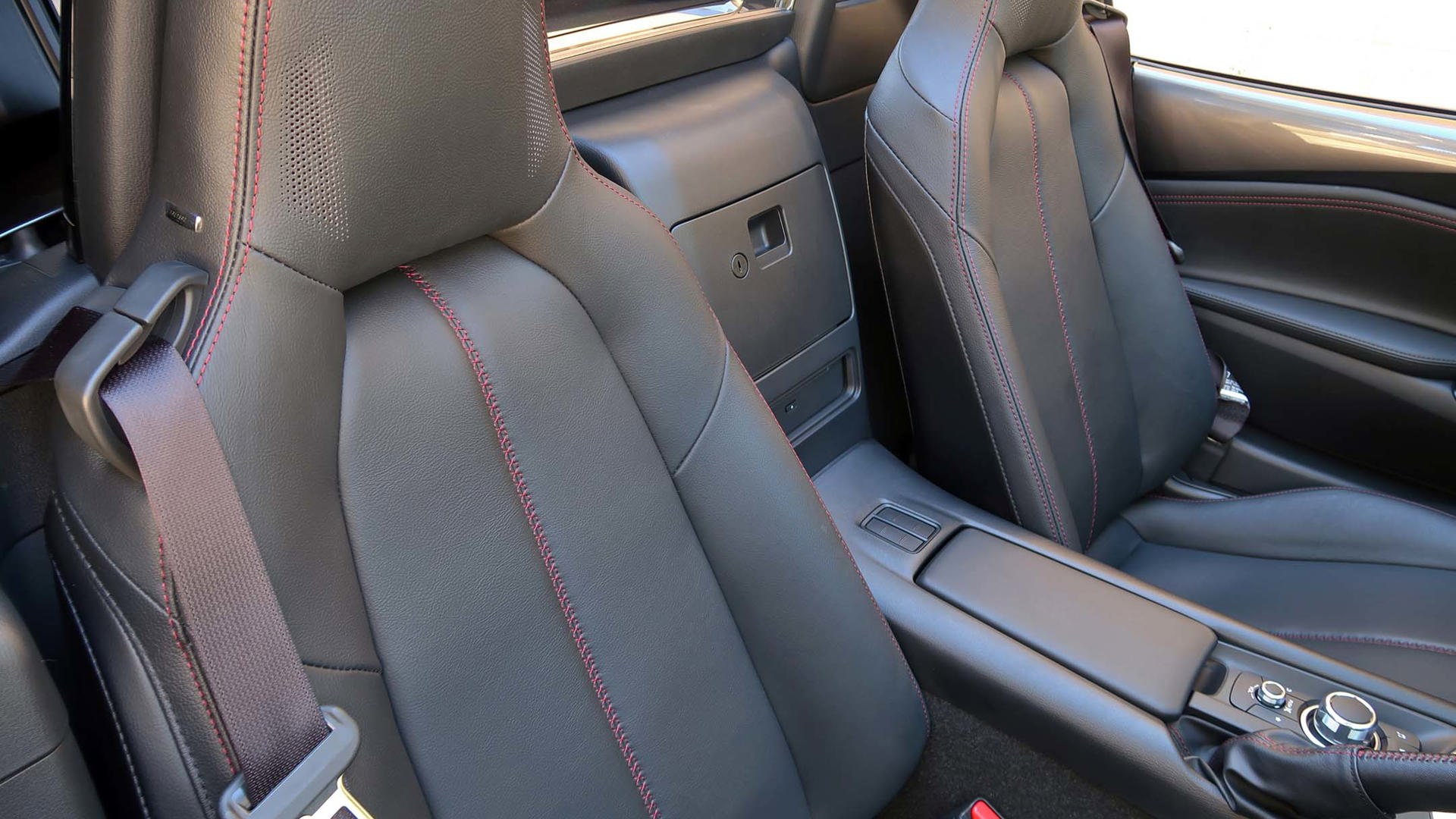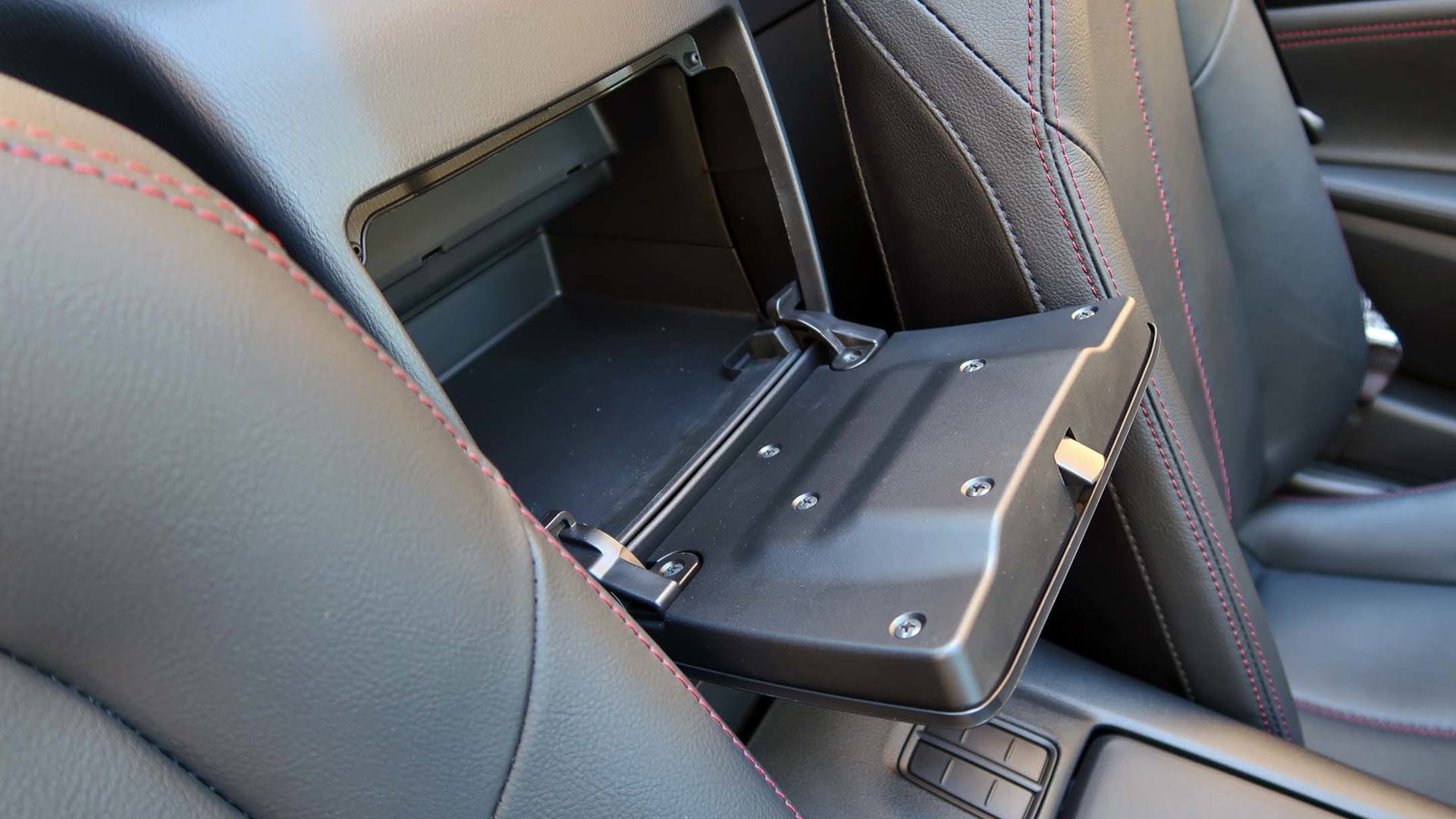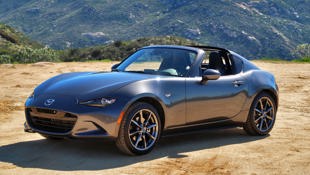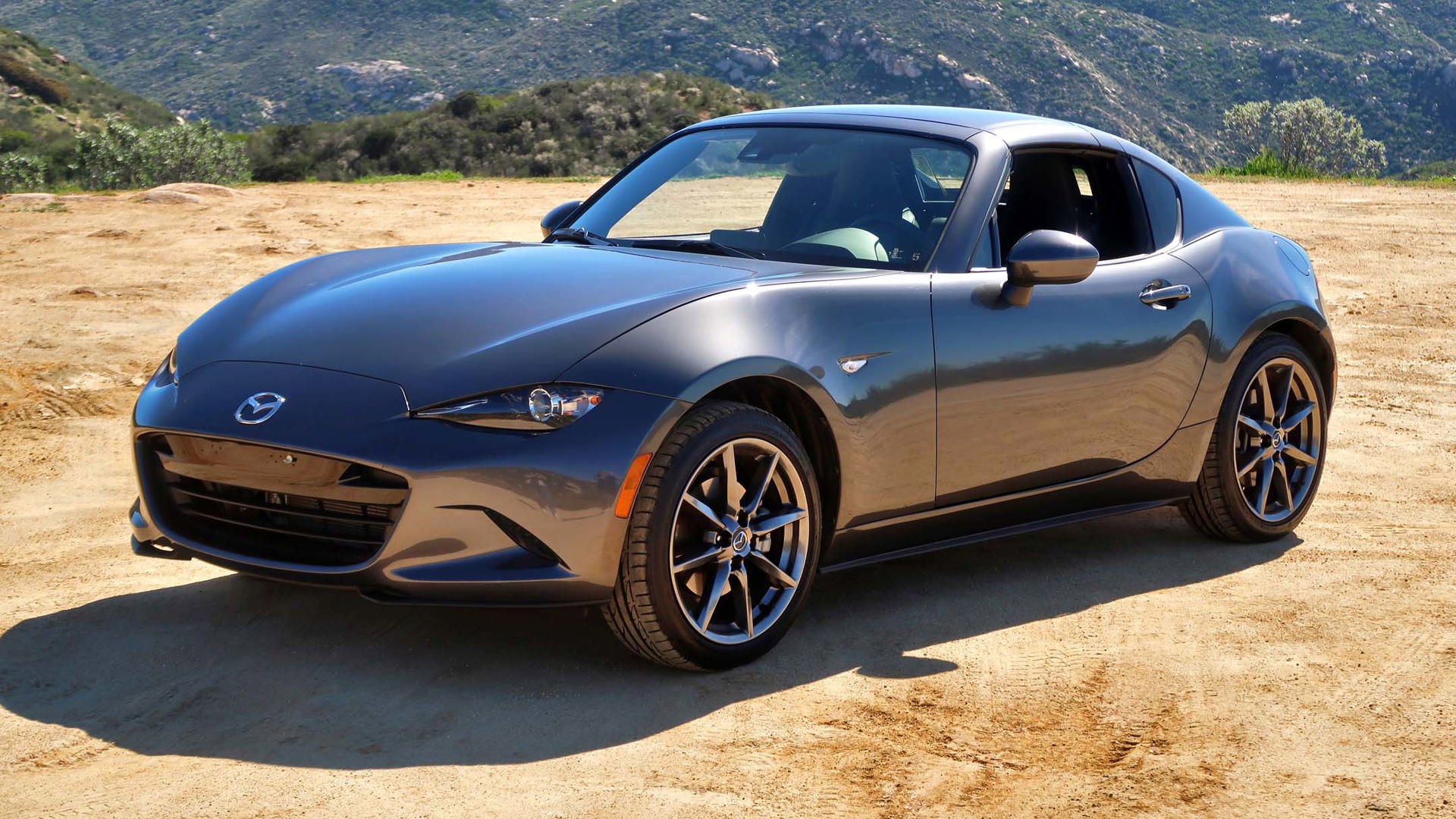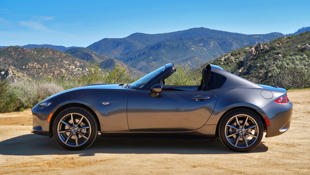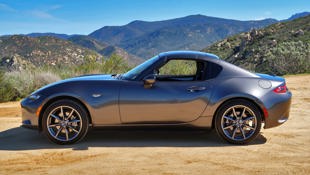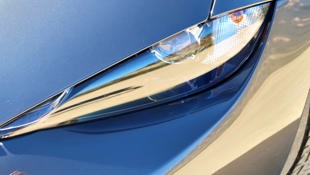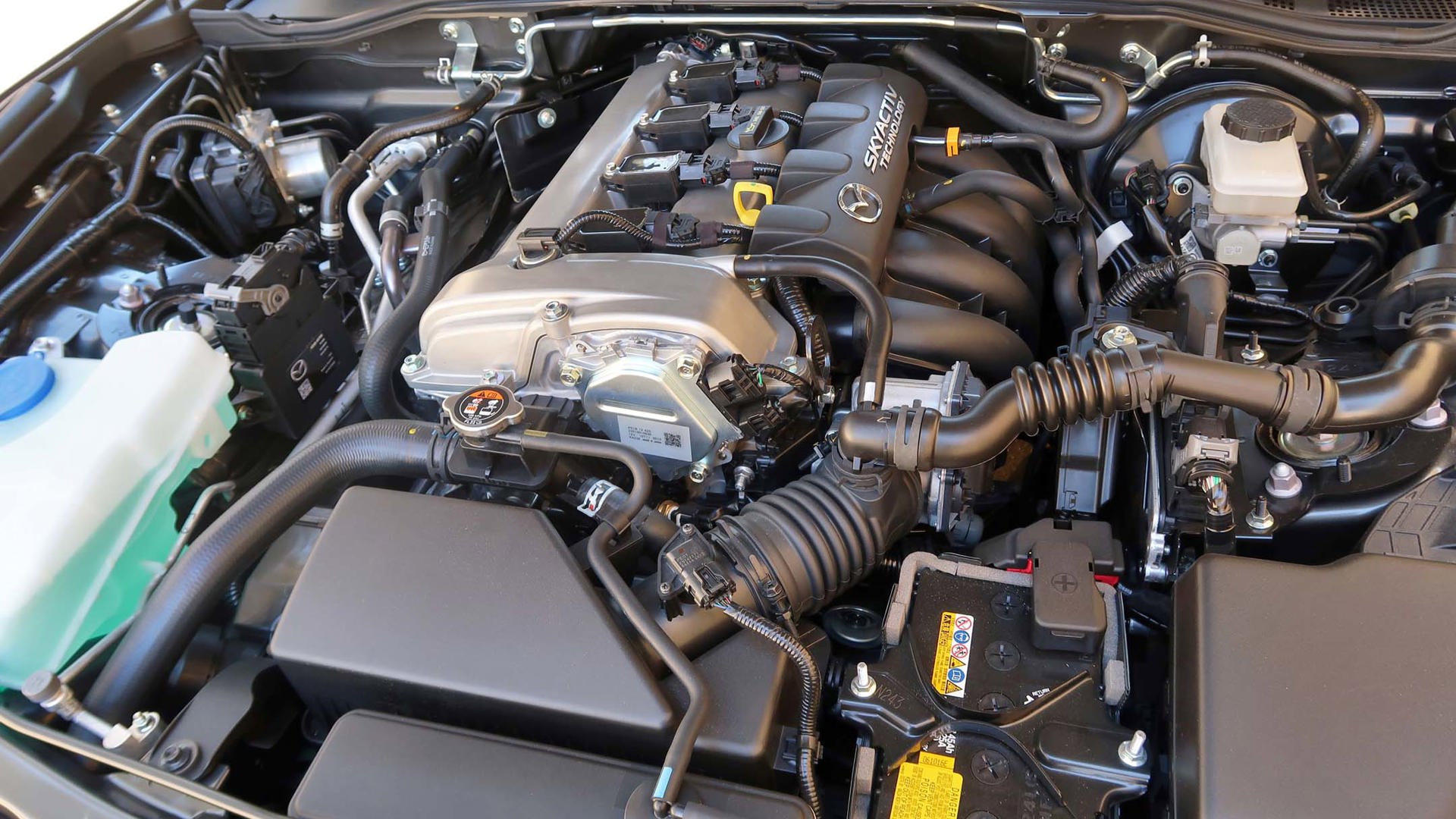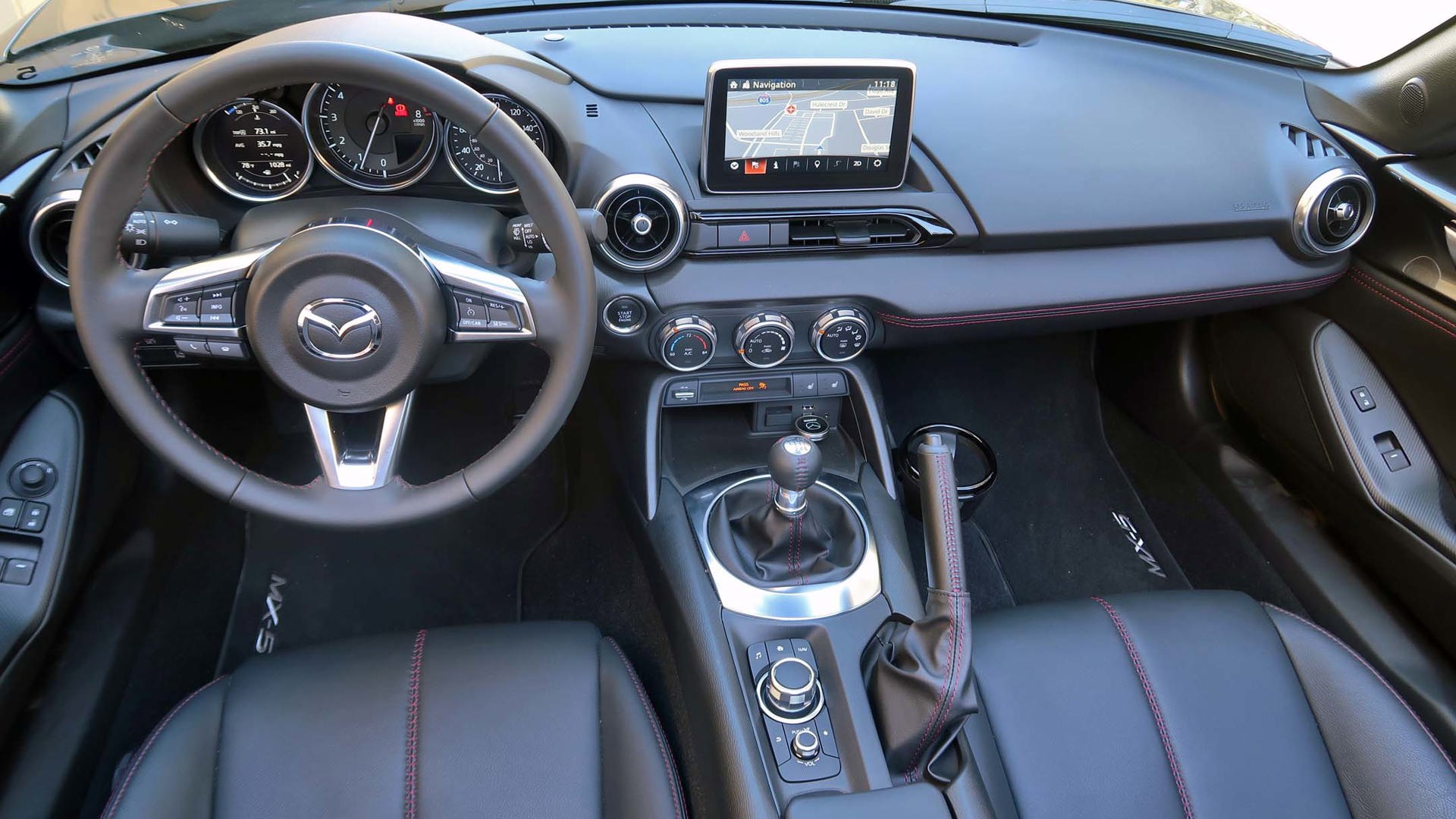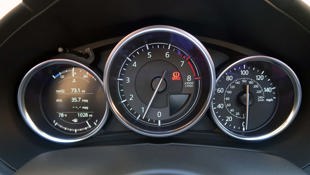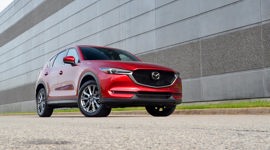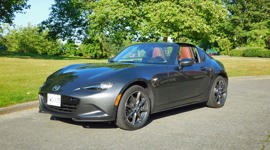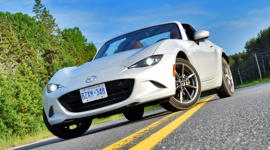SAN DIEGO – At the risk of name-dropping, I once interviewed Jay Leno, better known as the God of Gearheads. The man has driven just about every car in the world and seems to own at least half of them. And when I asked about his favourites, he said the best clutch-and-shifter combination, of anything he’s ever driven, belongs to the Mazda MX-5.
It’s now the MX-5 RF, for “Retractable Fastback,” because it’s really a targa roof rather than a full top-down experience.
Scampering through the switchbacks on these California hills, rowing the gears from one blind curve into another, I know he’s right. And it’s even better driving when you’re topless – not me, of course, but the MX-5, which returns with a retractable hardtop after a year’s hiatus for 2017.
It’s now the MX-5 RF, for “Retractable Fastback,” because it’s really a targa roof rather than a full top-down experience. There’s a surprising reason behind its design. While those who own soft-top MX-5 roadsters spend 75 percent of their time with the roof down, the old hardtops had their roofs up 80 per cent of the time. Hey, it sounded strange to me too, as my winter-starved skin soaked up some Vitamin D and the wind blew my hair into gloriously knotted tangles. But convertibles aren’t that much fun on the freeway, or when you’re stuck in traffic in the middle of summer. I hope that’s their excuse, anyway.
So with all those roofs up most of the time, there was a nasty reality: the bubble-shaped top just looked weird. This time around, Mazda’s designers have given it a flatter roofline that sweeps back into twin flying buttresses. But there’s only so much magic available when you have to fold auto parts, and while the two front panels stow away out of sight, the buttresses remain.
It may look close-coupled in the photos, but it feels a lot airier when you’re inside. While it might have seemed logical to put quarter-windows in the C-pillar, rather than the black plastic panels, these opaque pieces hide the mechanisms that raise and lower the roof. It’s a thirteen-second operation that happens at the push of a button. There’s no need to unlatch it first, as had to be done on the old hardtop.
To save weight, the buttresses are made of compound plastic, while the front panel is aluminum, and the centre one is steel. The roof adds about 56 kilograms, and the car has been tuned to compensate for the weight.
The hard roof also adds $3,000 to the price. There’s no base GX trim as with the roadster; instead, the RF rings in at $38,800 for the GS, and $42,200 for the GT. Both trims come with a six-speed manual or six-speed automatic for the same price. There are also some available options, including a $4,400 Sport Package for the GS that adds Brembo brakes, 17-inch BBS wheels, and heated Recaro leather seats, and a $3,600 Grand Sport package on the GT that includes a piano-black roof and mirrors, plus the Brembo brakes and BBS wheels.
The powerplant remains unchanged from the roadster, a naturally aspirated 2.0-litre four-cylinder that makes 155 horsepower and 148 lb-ft of torque. Naysayers will harp on what are relatively low numbers for a sports car, especially since Mazda also turns its MX-5 into the Fiat 124 Spider, aka the “Fiata,” using a Fiat turbocharged engine that cranks out 164 ponies and 184 lb-ft of twist. That’s a great driver too, but what the MX-5 lacks in raw power, it makes up in beautiful balance. The engine’s only pushing 1,114 kilograms around as well, even with that roof.
The car is perfect for these California curves. Mazda says it changed a rear bushing in the suspension and tuned it for the weight, and the car stayed neutral even on hard corners, without that extra mass trying to spin the rear end around. I knew the weight was there, but I didn’t really feel it. Since RF owners will seldom drive theirs back-to-back with the lighter soft-top edition, they probably won’t either.
The manual transmission is still a thing of beauty, but after spending the morning with three pedals, I switched in the afternoon to an autobox. Those who prefer to let the car do the work will not be disappointed. The shifts are quick and decisive, and swap out just as fast when you select them yourself through the wheel-mounted paddles.
While some retractable hardtops fold into the trunk, forcing you to stuff your cargo under it, the RF’s roof disappears into its own cubby and leaves the trunk untouched. That said, you’ll still need to travel light. There’s no glovebox, just a tiny box in the centre console, and a somewhat larger one between the seats. And there’s only one cupholder, but then, what heathen would pilot an MX-5 while paying attention to a drink?
The buttresses trap a lot of wind and buffet it around you on the highway. Things got better on the secondary roads, and for the most part I could have a conversation with my co-driver at 80 km/h without yelling. Surprisingly, we found the RF was noisier with the roof up under the same 80 km/h conditions, which we attributed to road noise reverberating against the roof instead of floating up into the open sky. Perhaps that will encourage owners to lower that percentage of top-up time?
There’s a reason why the MX-5 has a cult following, along with a Guinness World Record for the best-selling two-seater sports car ever. The steering is beautifully precise without turning twitchy, it’s ridiculously fun to drive, and that shifter is just heavenly. It’s a pricey step up to the RF, but it’s also a different market: soft-top buyers won’t touch it, but the old hardtop had enough unique fans that it outsold the cloth-top version. And now that the rigid roof actually looks good, I’m guessing it’ll do it again.
